HEALING THE RIFT IN ISRAELI SOCIETY
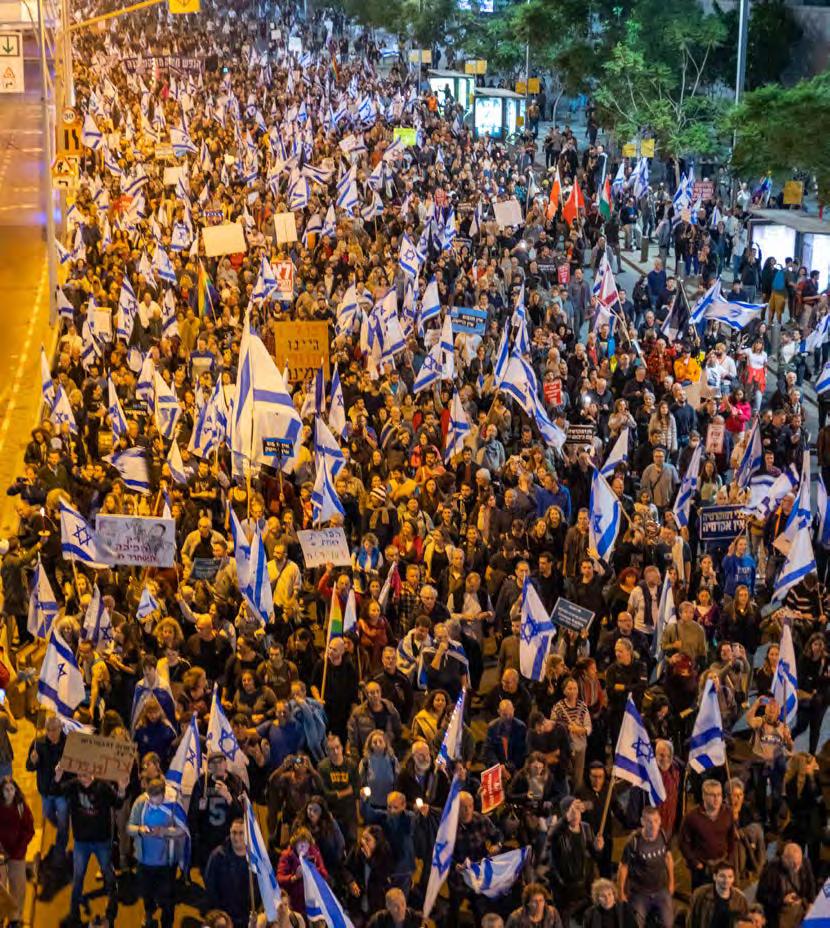
יִחָרְזִמַּה UK EDITION VOL 6 • NO 3 TISHA B'AV 5783 120 YEARS OF RELIGIOUS ZIONISM Est. 1902
to our Yehudi madrichim who are inspiring the next generation. (PHOTO: OREN ROZEN/WIKIMEDIA COMMONS)
WITH GRATEFUL THANKS TO THE FOUNDING SPONSORS OF HAMIZRACHI THE LAMM FAMILY OF MELBOURNE, AUSTRALIA
Dedicated
www.mizrachi.org
www.mizrachi.tv
office@mizrachi.org
+972 (0)2 620 9000
PRESIDENT
Mr. Kurt Rothschild z”l
CO-PRESIDENT
Rabbi Yechiel Wasserman
CHAIRMAN
Mr. Harvey Blitz
CEO & EXECUTIVE CHAIRMAN
Rabbi Doron Perez
DEPUTY CEO
Rabbi Danny Mirvis
EDUCATIONAL DIRECTORS
Rabbi Reuven Taragin
Rabbanit Shani Taragin
World Mizrachi is the global Religious Zionist movement, spreading Torat Eretz Yisrael across the world and strengthening the bond between the State of Israel and Jewish communities around the world.
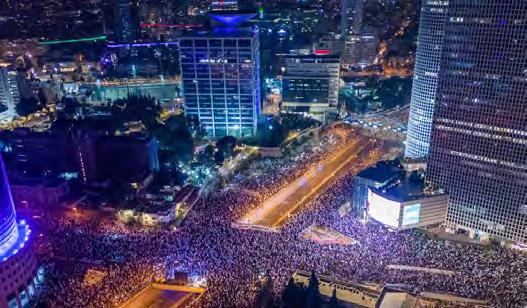
Based in Jerusalem and with branches across the globe, Mizrachi – an acronym for merkaz ruchani (spiritual center) – was founded in 1902 by Rabbi Yitzchak Yaakov Reines, and is led today by Rabbi Doron Perez. Mizrachi’s role was then and remains with vigor today, to be a proactive partner and to take personal responsibility in contributing to the collective destiny of Klal Yisrael through a commitment to Torah, the Land of Israel and the People of Israel.
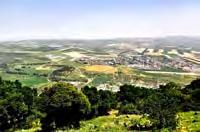
www.mizrachi.org.uk
uk@mizrachi.org
020 8004 1948

PRESIDENT
Chief Rabbi Sir Ephraim Mirvis
CHAIR OF TRUSTEES
Steven Blumgart
CHIEF EXECUTIVE
Rabbi Andrew Shaw
BOARD
Michelle Bauernfreund
Matti Fruhman
Andrew Harris
Grant Kurland
Sean Melnick
David Morris
To dedicate an issue of HaMizrachi in memory of a loved one or in celebration of a simcha, please email uk@mizrachi.org

These do not necessarily reflect any official position of Mizrachi or its branches. If you don't want to keep HaMizrachi, you can double-wrap it before disposal, or place it directly into genizah (sheimos).
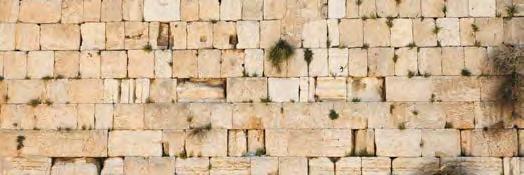
INSIDE REGULARS 4 Rabbi Doron Perez 6 Rabbi Andrew Shaw 24 Aliyah Diaries 28 Rabbi Reuven Taragin 29 Rabbanit Shani Taragin 30 Rabbi Yosef Zvi Rimon 32 Rabbi Jonathan Sacks zt"l 37 Sivan Rahav-Meir 46 Hallel and Shammai REGULARS PAGES 11–25 HEALING THE RIFT IN ISRAELI SOCIETY PAGES 28–33 Ideas and Inspiration for Tisha B’Av PAGES 34–36 The Netziv vs. Rav Chaim: Zionism and Love of the Land PAGES 26–27 A new Mizrachi podcast series on the persona and teachings of Rav Kook REGULARS 4 Rabbi Doron Perez 27 Rabbanit Shani Taragin 38 Rabbi Reuven Taragin 49 Sivan Rahav-Meir 56 Aliyah Diaries 59 Food from Israel 61 Crossword 62 Hallel and Shammai EDITOR Rabbi Elie Mischel editor@mizrachi.org | MANAGING EDITOR Rabbi Aron White CREATIVE DIRECTOR Leah Rubin | PROOFREADER Daniel Cohen HaMizrachi is available to read online at mizrachi.org/hamizrachi PUBLISHED BY WORLD MIZRACHI IN JERUSALEM HaMizrachi seeks to spread Torat Eretz Yisrael throughout the world. HaMizrachi also contains articles, opinion pieces and advertisements that represent the diversity of views and interests in our communities.
120 YEARS OF RELIGIOUS ZIONISM Est. 1902
2 |
COMMENTARY AT THE SITES WHERE THE TRAGEDIES OCCURRED... ACROSS ISRAEL AND AROUND THE WORLD


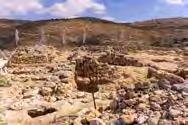


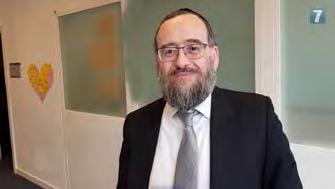
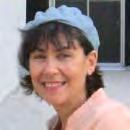
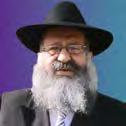

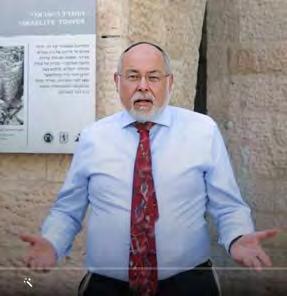

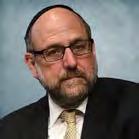
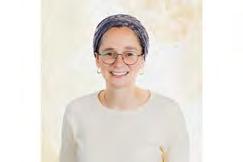
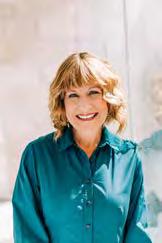

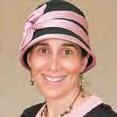

MISS THIS YEAR’S ADDED LOCATIONS
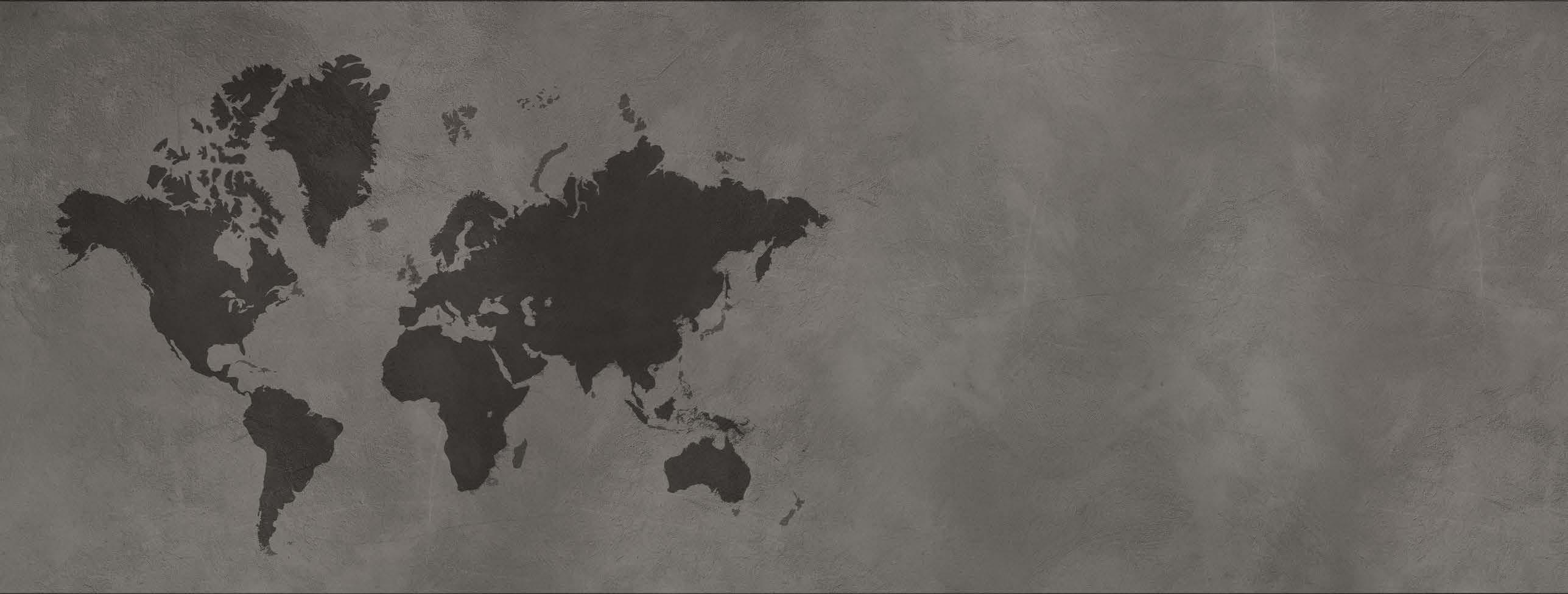

Watch at: mizrachi.org/kinotonlocation
MAKE YOUR TISHA B’AV MORE MEANINGFUL WITH MIZRACHI’S
Rabbanit Shani Taragin Sha'ar Ha'Ashpot
Rabbi Hanoch Teller Yad Vashem Midras Schudrich Ghetto Uprising Memorial, Warsaw, Poland
Rabbi Yonason Golomb Clifford's Tower, York, UK
Franny Waisman Derech Avot
with an introduction by Rabbi Dr. Jacob J. Schacter
NEW! DON’T
Now with French and Spanish Subtitles
The Law of Unintended Consequences
The Temple’s Destruction and Decaying
Political Discourse
Alexander the Great was not only one of the greatest political leaders of antiquity, but he also studied philosophy under the tutelage of the distinguished Greek philosopher, Aristotle. Alexander pondered some of the salient questions of life. One of the rabbinic sources attesting to his thirst for wisdom is recounted in the Talmud (Tamid 32) when during his Middle Eastern conquests, he presented ten philosophical questions to the בֶגֶנַה יֵמְכַח – the Sages of the South.
One of those questions was – who is considered a wise person? What is the single quality necessary in order to be considered wise and sagely?
The Sages of the South answered simply: “דָלֹונַה תֶא הֶאֹורָה, one who has foresight,” someone who is able to consider carefully the consequences of their actions.
Indeed this very same quality was identified by the Sage of the Mishnah, Rabbi Shimon ben Netanel, as the most important quality that a person should cleave to (Avot 2:13). Rabbi Yochanan ben Zakkai had questioned his five students as to what the most important quality of a life is. Rabbi Shimon answered that the quality of foresight is paramount of all qualities, echoing the very same words of the Sages of the South – דָלֹונַה תֶא הֶאֹורָה.
Prof. Merton and unintended consequences

Considering the consequences of our actions is a critical principle both in our individual lives and for leaders making decisions with communal and national consequences. The great American sociologist Robert K. Merton developed what is known as “the law of unintended consequences” in the course of his writings. Born with the distinctly Jewish name Meyer Robert Schkolnick, Merton is considered by many as the founding father of modern sociology. In an influential article entitled “The Unanticipated Consequences of Purposive Social Action” he argues that there are 5 main causes that result in an unintended consequence to a particular action.
The one I would like to focus on is his third one, described by Merton as “the imperious immediacy of interest.” By this, Merton is referring to instances in which individuals wish the intended consequence of an action so much that they either consciously or subconsciously choose to ignore any possible undesired results – a type of willful ignorance. This happens when the decision maker is pressed for an immediate result and driven by agendas serving the immediate and short-term, without careful consideration of the long-term consequences of their actions. If they were more patient with a medium- to long-term worldview,
they would undoubtedly act differently. By not doing so, they often achieve what they want in the short-term, which then unleashes an unexpected snowball effect in the long-term.
Kamtza and Bar Kamtza
In the famous story of Kamtza and Bar Kamtza (Gittin 55) which led to the destruction of the Temple, we see two critical decisions which our Sages identify as pivotal reasons that caused the destruction of the Temple. Both fit into Merton’s third category – making short-sighted decisions, without enough foresight, and with disastrous consequences.
The first was the cruel and unkind decision of a prominent party host to throw his mistakenly invited enemy Bar Kamtza out of the party after confusing the name on the invitation with his friend Kamtza. Ignoring Bar Kamtza’s pleas not to be humiliated and his offer to pay for half of the entire banquet, the host publicly humiliated Bar Kamtza by throwing him out the party. The host achieved his short-term aim – alleviating himself of the presence of his enemy at his banquet, but didn’t think about the chain reaction his actions would cause. Bar Kamtza was so upset, not only with the host but with the fact that none of the public notables and
Rabbi Doron Perez
4 |
rabbis interceded, that he decided to seek vengeance on the whole society.

It was then that he began a course of action which ultimately led to the destruction of the Temple – this was the unintended long-term consequence of the hosts actions. Bar Kamtza ‘informed’ the Romans that the Jews were about to rebel against them, based on the “proof” that they would not offer a sacrifice brought by the Romans to the Temple. When the Romans sent a sacrifice to check it out, Bar Kamtza made a blemish behind the animal’s lip which disqualified it for the Jews but not for the Romans. The rabbis believed the right thing under the circumstances was to offer the forbidden blemished sacrifice in order to avoid angering the Romans and presenting a danger to Jewish life. Rabbi Zechariah ben Avkulas, the leading sage, ruled against it with the argument that “people will say that it is permitted to offer blemished sacrifices on the Temple.” When the sages argued further that Bar Kamtza would now go and inform the Romans that the sacrifice was not offered and this with potentially devastating consequences, Rabbi Zechariah ben Avkulas, once again argued that he should not be harmed as “people will say that it is permissible to kill a someone who offers a blemished sacrifice.” In the end the sacrifice was not brought and Bar Kamtza was not harmed. He indeed as expected went on to deceitfully relay the news of an imaginary Jewish rebellion which ultimately led to the destruction of the Temple.
Short-sighted humility
A second unintended consequence was the conservative and humble ruling of Rabbi Zechariah ben Avkulas. Immediately at the end of the story, the sage Rabbi Yochanan then very sharply opined “as a result of the humility of Rabbi Zechariah ben Avkulas the Temple was destroyed.”
Rabbi Zechariah ben Avkulas was a humble purist, a person who could not bring himself to rule proactively on something controversial. It is true that it was a tough and controversial decision to offer a blemished sacrifice or certainly to kill Bar Kamtza, but it is equally true that not doing so was much worse and caused horrific long-term destruction to the Jewish people. His humility prodded him to take a conservative passive stance of not ruling to allow a forbidding sacrifice or kill a fellow Jew. Unfortunately, in the harsh reality of life and leadership, proactivity and courage are needed. The source of his
greatness became the source of his weakness in this specific circumstance. Rabbi Zechariah’s short-sighted view of what he felt was right in the particular short-term, led so quickly to long-term devastating consequences.
Confronting the potential long-term impact of our actions is absolutely critical in decision-making and according to the Sages of the South and Rabbi Shimon, the single greatest quality of wisdom and life respectively.
Democratic discourse vs. anarchic chaos
In recent years we are encountering an ever-increasing political discourse which is now bordering on anarchic chaos. The democratic right to protest has been taken to such extremes that it has started crossing all boundaries of civility and basic human dignity. This began in 2021 with the inauguration of Prime Minister Bennett, which saw so much vocal protest that so many parliamentarians had to be removed from the Parliamentary plenum. Members of the opposition were then summarily excluded from key committees. In protest to the breaking of campaign promises of members of Bennett’s Yamina party in joining the then coalition, their parliamentarians were constantly harassed outside their private homes as well as sometimes during synagogue services.
When the current government unveiled their judicial reform program, there was much anger by many who felt that this had gone too far. They began to exercise their legitimate right to protest and to vociferously oppose the plans. But then lines were crossed when 200 IDF pilots decided in protest not to show up for training. Putting Israel’s security on the line is crossing a thick red line. Bringing life-saving issues of consensus such as the army into the center of the political fray is a disturbing precedent. Similarly, some leaders overtly or covertly encouraged financial disinvestment from Israel as a legitimate tactic. Bringing the army and economy – Israel’s security and economic stability – into partisan politics has dangerous long-term consequences.
The non-stop disruptions in places all around the world when some members of the coalition speak, with protesters shouting “busha, busha, shame, shame” has no red lines. Recently, when MK Simcha Rothman spoke in a shul in New Jersey, protesters outside were shouting “shame, shame that you came even to listen to Rothman.” It is disgraceful that
people are shamed for coming to merely listen to another view about a significant political issue. The proliferation in recent years of this type of public humiliation and disruption, starting with the opposition to the Bennett-Lapid government and continuing in much greater proportions against the current government is alarming. Our politicians need to consider very carefully the long-term consequences of their actions. When lines are crossed in political discourse for the sake of immediate gain without considering the implications for future discourse, an unintended snowball effect is unleashed.
A time for civility
We are treading very close to the abyss of causeless hatred which was a primary cause of the Temple’s destruction (Yoma 9b). Equally, the lack of foresight by the host and bystanders when Bar Kamtza was humiliated as well as Rabbi Zechariah’s lack of foresight are also salient reasons for the destruction.
Leaders, and indeed all of us, must be exceptionally careful what means we deploy to get our way in the short-term. Acts taken for immediate gain can unleash a snowball of unexpected consequences which alter the rules of the game. It is high time to put political gain and short-term considerations aside and engage in civil, respectful debate for the sake of the longterm integrity of our society.
It is time to wake up. Too much depends on it.

| 5
Rabbi Doron Perez is the Executive Chairman of World Mizrachi.
Lessons for Tisha B’Av in the 21st Century Rabbi Andrew Shaw
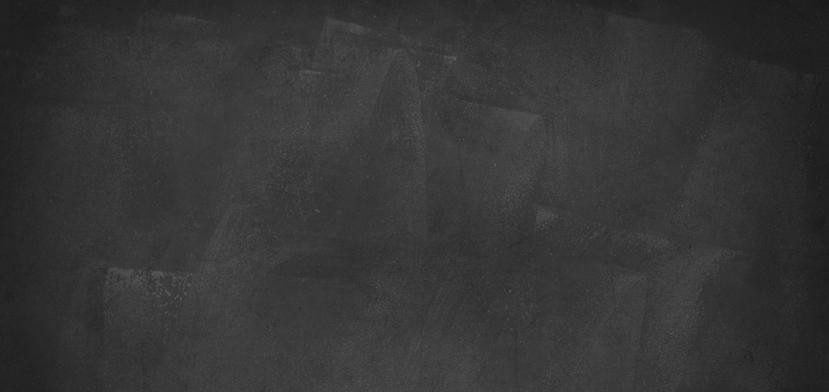
The Gemara in Yoma, famously tells us that Bayit Rishon (the First Beit HaMikdash ) was destroyed due to bloodshed, immorality and idol worship. However, for Bayit Sheni (the Second Beit HaMikdash ), it simply gives the cause as ‘sinat chinam’ – baseless hatred.
What is interesting is that we seem to quote this Gemara as the sole reason for the destruction. However, the Gemara in several other places gives further reasons for the destruction.
What is painful to me, is that so many of these issues are still so prevalent in the Jewish world.
In Bava Metzia 30b it states: Rav Yochanan said: “Jerusalem was destroyed only because the judges ruled in accordance with the strict letter of the law, as opposed to ruling beyond the letter of the law.” One of the many things I learnt from the Torah giants that have taught me, is that halacha is sensitive, dependent on multiple factors. Our piskei halacha must have heart as well as mind, being maikil (lenient) is not something to be ashamed about. We have to judge each case individually.
In Shabbat 119b it states: Abaye said: “Jerusalem was destroyed only because the Sabbath was desecrated.”… Rav Abbahu said: “Jerusalem was destroyed only because the reading of the Shema, morning and evening, was neglected.” These are our personal relationships with Hashem, the core mitzvot that make up the daily and weekly life of a Jew. How tragic that today the vast majority of Jews globally do not keep Shabbat or engage in regular tefillah. The reason is not rebellion or anger but simply a lack of knowledge or inspiration. The lack of knowledge or inspiration can lead to a complete warping of what Torah and Judaism are, and that is a tragedy in itself.
Rav Hamnuna said: “Jerusalem was destroyed only because they neglected the [education of] school children.” We know children are our future, but we must make sure the education they are getting is relevant to their lives and authentic to our traditions. This is a challenging combination, but one we must strive to get right if we want Jewish grandchildren.
Ulla said: “Jerusalem was destroyed only because people had no shame before each other.” This is the curse of the 21st century, social media and a permissive society have lessened the moral fortitude of a generation. Torah stresses the ideas of modesty, privacy and dignity. These are values no longer prioritized by a society obsessed with reality TV and the like. The mainstream Jewish world is very much exposed to this weltanschauung.
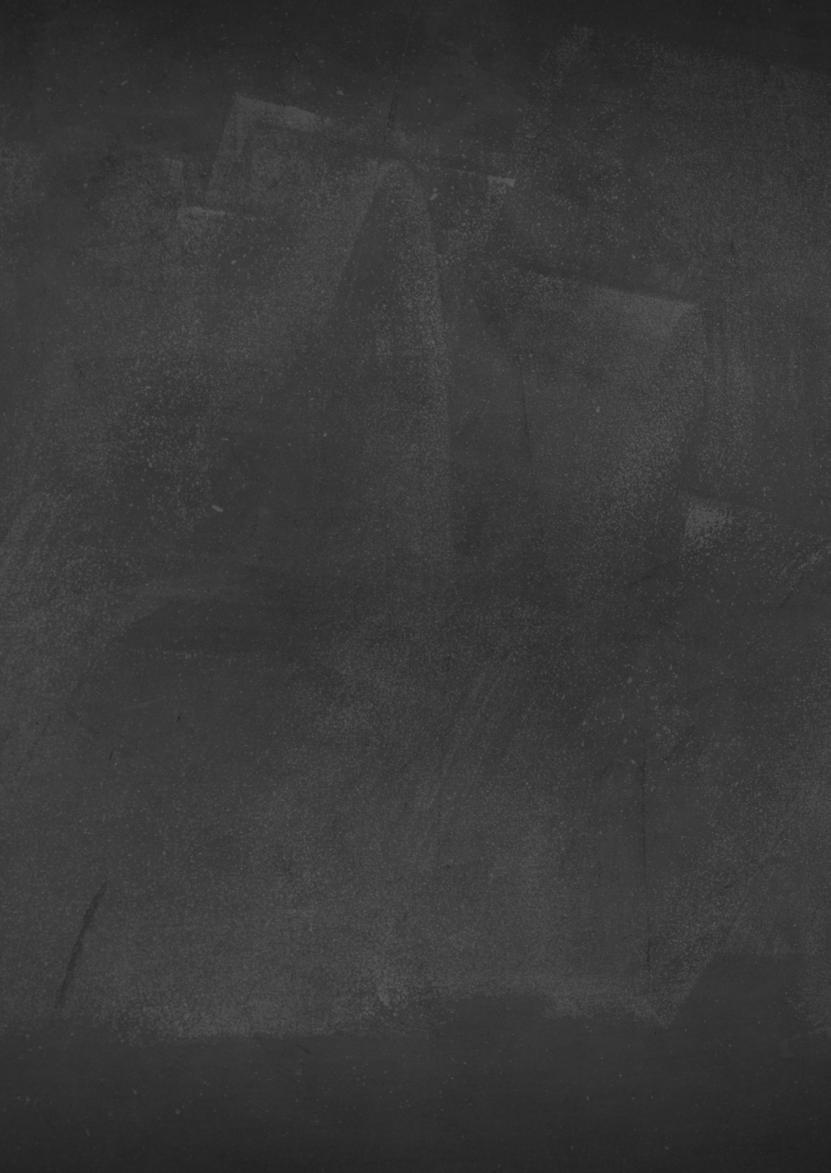
Rav Isaac said: “Jerusalem was destroyed only because the small and the great were made equal….” We don’t expect an average person to be able to answer a question relating to neuroscience or complex tax calculations. Yet in the realm of Jewish law and Jewish thought we seem to give credibility to people who have very little training, knowledge or grasp of the huge corpus of Jewish texts, laws and philosophy. We would not accept it in any other field, but it is tragic that anyone can declare themselves an expert on Judaism.
Rabbi Hanina said: “Jerusalem was destroyed only because people did not rebuke each other.” This goes to the heart of our problems today. We are not allowed to rebuke anyone, tell them they are wrong. At the same time, we must remember that the concept of rebuke in Torah comes from a position of love and distress that a fellow Jew could be acting in such a way. There is no room for violence and hatred.
Rabbi Yehuda said: “Jerusalem was destroyed only because they disparaged

Torah scholars.” We may not agree with some of our rabbis, and questioning and inquiring are all part of the communal discourse. However once healthy inquiry moves into belittling and denigrating our leaders, then a line has been crossed. Rava said: “Jerusalem was destroyed only because there were no more people of integrity.” The final statement of the Gemara speaks volumes about what we need to achieve. Without integrity, without people who we can look up to and admire, we have no chance to build our people and build Bayit Shelishi (the Third Beit HaMikdash).
So, the solution according to the Gemara is that we must: Keep Shabbat, Say Shema, Inspire our kids, Value our leaders, Rebuke with love, Live lives of modesty, dignity and privacy, And be people of integrity.
6 |
Rabbi Andrew Shaw is the Chief Executive of Mizrachi UK.






The Sukkot edition of HaMizrachi will be dedicated to new communities in Israel. If you want your community to be highlighted or to advertise in this edition please reach out to production@mizrachi.org by August 10th. יִחָרְזִמַּה KODESH TEACHERS: Join Herzog’s RIMONIM TEACHER TRAINING PROGRAM October 2023 – December 2024 Participation Fee: $775 Learn more at: bit.ly/rimonim2023 Application Deadline July 31 For more information and to apply, contact Hadassah Levy: WhatsApp: +972-54-552-2464 Email: herzogolami@herzog.ac.il Advance your career Enhance your knowledge & skills Learn online on your own time Join a free learning trip to Israel
Mizrachi Leaders in the National Institutions
Mizrachi’s representative in the National Institutions Gael Grunewald is Deputy Chairperson of the World Zionist Organization and Head of the WZO’s Department of Education. His department has recruited and trained an additional 90 Morim Shlichim who are going out to communities around the world. This brings the total of Educational Shlichim for this coming year to well over 200. Regular visits to communities and schools around the world are a constant, such as his visit to the Budapest University of Jewish Studies (top), and addressing a Momentum trip for French women to Israel (bottom).
In June 2023, the Center for Religious Affairs in the Diaspora organized a European Young Professionals Weekend in Paris with 70 participants from 15 different countries, including Ukraine, Sweden, Norway, Poland, Russia, Turkiye and Portugal. The weekend’s focus was on Jewish identity and their connection to Israel.

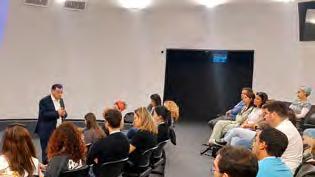
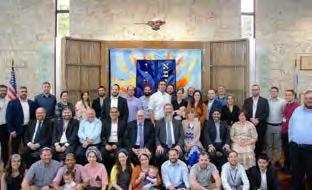


The Center for Religious Affairs in the Diaspora of the World Zionist Organization is headed by Roi Abecassis, Deputy Chairman of Keren Kayemet Le’Yisrael and World Mizrachi representative in the National Institutions.
 Roi Abecassis at the Ohr Torah Stone/Amiel shlichim conference in Miami
Gael Grunewald at the training of 90 outgoing Morim Shlichim
Roi Abecassis at the Ohr Torah Stone/Amiel shlichim conference in Miami
Gael Grunewald at the training of 90 outgoing Morim Shlichim
8 |
MIZRACHI LEADERSHIP CLASS OF 5783
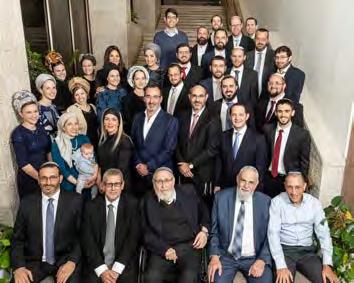
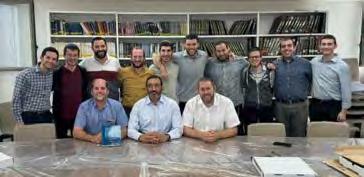

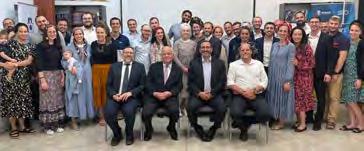

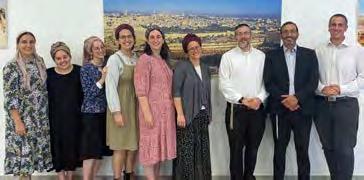
5 Leadership Training Programs: Lapidot • Manhigut Toranit • Mechanchim • Musmachim • Shalhevet
MANHIGUT TORANIT
Participants of all the Mizrachi Leadership programs at the Leadership Shabbaton in January 2023
MUSMACHIM
SHALHEVET
| 9
MECHANCHIM LAPIDOT
Anava – A New Zionist Dream
A new opportunity to own your own vineyard in the Land of Israel


In 2019, Nadav Jesselson was sitting at his desk in Tel Aviv in the family investment office. “I enjoyed my time working there, but I felt I had calling outside of the concrete jungle.”
Nadav’s journey led him to buy a farm in Moshav Nechusha, 15 minutes south of Beit Shemesh. Initially, he started to produce grapes to be sold to Carmel Winery, but then a new idea developed. “I loved the experience of planting my vineyards, and I started to think – what if we gave Jews from around the world the opportunity to own their own vineyard in the Land of Israel?”
And thus, the concept of Anava vineyards was born. There are a limited number of 30 vineyards being sold, each half a dunam. Buyers will receive their own vineyard, and Anava also provide all the services to grow the grapes, produce the wine and deliver it to the owners. Each vineyard will produce around 300 bottles of wine on an annual basis. “We offer something unique, which is a ‘vineyard as a service.’ We have a team of experts, with some of the most experienced winemakers in the field guiding us to produce the highest level wines from the vineyards that you will own.”
Anava is already attracting lots of attention, with noted wine expert Adam Montefiore describing the project as “inspiring” as well noting the top-level names they have working with them. Winemaker Eyal Drory, the winemaker for Agur Winery and Avinoam Inbar, the former vintner of Castel wines are the two leading winemakers who are guiding the project. Vineyard owners get to choose their own grapes, and are encouraged to visit and take as active a role as possible. “We love the idea of giving people first-hand experiences of every step of the process. We want people to feel connected to their vineyard and the story of their wine, to be connected to Eretz Yisrael, and to be connected to all of the tremendous steps of the growing process.”
For Nadav, Anava is not only a vineyard, but a project that expresses deeply held values. “Our name, given by our cofounder’s Moriah (Nadav’s wife) comes from the Hebrew word for ‘grape,’ but also sounds like the word anava, the Hebrew word for ‘humility.’ The process of winemaking incorporates that value – we act with humility in front of nature and the land, recognizing that we partner with the land in cultivating it. I remember the day I finished planting my first vineyard, I remember feeling the pulse of the land, feeling 11,000 plants taking root and deepening themselves in the ground. One can hear many shiurim about the value of Eretz Yisrael, but there is something so powerful about working the land and feeling the process oneself. The mitzvah of orlah, that tells us we have to wait for three years before we can use the fruits of our vines is also a powerful lesson in humility, as well as in the need for patience and restraint.
The cost of a vineyard at Anava is $60,000, which is the cost for the first three years. After that, each year there are costs of $18,000 for the annual production costs, and each year the vineyard will produce around 300 bottles of wine. Buyers can choose which variety of grapes are planted, and every year they will produce different blends and wines for that vintage. The first grapes are going to be planted by the end of July, and prices for vineyards are likely to rise at that point.
As we mark Tisha B’Av, the echoes of Jewish history are deeply meaningful for Nadav and the Anava project. “Just a few meters from our vineyards are the ruins of a vineyard from the times of the Second Beit HaMikdash. When I am out in the vineyard, I have an acute awareness that my forefathers grew grapes here as well. With Anava vineyards, we invite you too to join us, and to experience the wonders of owning your own vineyard in the Land of Israel.”
For more information, contact Anava at info@anavavineyards.com or call Racheli at +972 50 717 5479
HEALING THE RIFT IN ISRAELI SOCIETY
 An Introduction by Rabbi Aron White
An Introduction by Rabbi Aron White

In July 2021, a movie called Agadat HaChurban premiered in Israel, depicting the destruction of Yerushalayim and the Beit HaMikdash by the Roman Empire. The movie vividly portrays the social and political divisions that gripped Jewish society at that time; between various rebel groups, between the wealthy and poor, and between religious and secular leaders. Torn apart in so many ways, the Jewish people didn’t stand a chance against the mighty Roman Empire.
In a remarkable cinematic feat, the movie is made up solely of 1,500 unanimated stills with voiceover, yet the action and drama of the story are so compelling that I nevertheless found myself deeply absorbed in the film. In one of the most gripping and tragic scenes in the movie, rival Jewish groups with different strategies for how to fight the Romans burn the grain storehouses of their rivals, bringing famine and starvation to the entire populace of Yerushalayim. Watching the movie, I understood the famous statement of Chazal that baseless hatred destroyed the Temple in a far more tangible way. The rabbis were not only making a moral statement, but also a clear-eyed assessment of the historic and political realities of their times. Jewish infighting weakened our people from within, allowing the Romans to destroy us from without.
The release of this movie in a modern Israeli context, in a reborn Jewish polity, was no accident. “I want this to have an impact on Israeli culture,” said director Gidi Dar,
a secular Jew. “I want it to ring an alarm bell, for people to be aware – we have been destroyed in this land twice, and we need to understand why.”
While this rang true two years ago, the events of the past six months have made this conversation even more urgent. Even by the tumultuous standards of Israeli politics, the first half of 2023 will be remembered as a uniquely fraught period in Israeli history. Hundreds of thousands of Israelis have protested on the streets, both against and for the judicial reform, in the largest constitutional debate in Israel for decades. Tensions between secular and religious communities, especially the Chareidim, have reached a fever pitch. At times, the acrimony has been overwhelming, sadly clouding the celebrations of Israel’s 75th birthday. Is Israel repeating the tragedy that led to the destruction of the second Beit HaMikdash?
In this edition of HaMizrachi, we explore some of the individuals and movements who are seeking to change this picture. From rabbis seeking to bridge the gaps, to singers like Ishay Ribo and Aviv Geffen, many people are working to promote understanding and connection instead of division and hatred. Just as we were 2,000 years ago, the Jewish people of Israel are a diverse and complicated nation of tribes, each with their own perspective. But as Rav Kook said, we can only heal the rifts in Israeli society by replacing baseless hatred with baseless love. May we succeed in that mission, and do our part to bring the final redemption one step closer.

| 11
(PHOTO: AMIR TERKEL/WIKIMEDIA COMMONS)
Our New Compass
Few Israelis have become ambassadors of unity like Miriam Peretz. An immigrant from Morocco, Miriam lost two of her six children during their IDF service, but through remarkable force of will she maintains a positive view of life and the future of Israel. In an exclusive interview for World Mizrachi in February 2022, Miriam Peretz shared her message regarding unity in Israel.

The meaning I find in my life is by bringing people closer to each other. Rather than looking at what divides us, wherever I go I try to shine a light on what connects us. What does it matter if you are left wing or right wing, secular or religious? We are all brothers! We are one people!
Thank G-d we have been blessed to build a country, but it means we now need something else. It used to be that all Jews had a compass that pointed in one direction – towards Eretz Yisrael. Well, now we have arrived! We need a new compass, and that compass is to be mechabrim, to join together – and this is something that Mizrachi is doing!

Our role is to create a model society, a society about which Yishayahu said: “And the wolf shall lie down with lamb.” He did not say that the wolf would become a lamb or vice versa. The secular person will remain secular, the religious will remain religious, but with the ability to live together, with a feeling of mutual responsibility and commitment to our people.
One of the ways I do this is by trying to focus on the positive in everyone. So much of our culture and the media is focused on attacking the other side, and just through bringing out the positive in each group, I hope I can make a contribution to Israel for many years to come.
12 |










A revolutionary way of learning Halacha available at To start a chabura or create a custom school curriculum, please email neil@tzurbaolami.com @tzurbamrabanan More information available at tzurbaolami.com VOLUME 15 AVAILABLE NOW!
A Debate about Judicial Reform
Hosted by World Mizrachi
On April 26th at the World Orthodox Israel Congress, World Mizrachi hosted a panel discussion on the proposed judicial reform in Israel. Featuring three prominent legal experts from Israel, the discussion was informative, as well as a model of civil discourse on this burning issue in Israeli society. Professor Moshe Koppel is the founder of Kohelet Policy Forum, Professor Yedidia Stern is the President of the Jewish People Policy Institute, and the discussion was moderated by Nitsana Darshan-Leitner, founder of Shurat HaDin.
This is a summary of the discussion – a link to watch or listen to the full discussion (about 50 minutes) appears at the end of the article.
Nitsana Darshan-Leitner: Good morning everyone, and welcome to this important discussion. Professor Koppel – the Kohelet Forum that you founded has been advocating for judicial reform, a policy the government has now followed. Why do we need judicial reform? What was wrong in the past 75 years of Israel that suddenly the legal system needs to change?
Prof. Moshe Koppel: Every democracy needs checks and balances between the different branches of government. The courts check the power of the legislature and executive to see that they are acting legally and constitutionally, but there is also a need for a check on the court’s power, especially as the other branches need to be re-elected, the courts do not. So what are the checks and balances on judges? In other countries there are many checks on judges. Not everything is justiciable, meaning there are areas such as foreign relations and war that the courts will not get involved in. The courts will not hear a case unless the person petitioning was personally affected by the government. The court will only strike down a law that is unconstitutional. The court has a list of rules it uses to judge administrative actions, it can’t just say ‘we don’t like that action.’ In almost every democratic
country the courts are appointed by elected officials. All five of these limitations on the court do not exist in Israel, largely because they have been removed by the courts own decisions in the past few decades, so that is why there is now the need to reform the courts to check their power.
NDL: So, Professor Stern, it seems like there is the need for reform? If judges can just say things aren’t reasonable, maybe that is too much power and there is the need for a change?
Prof. Yedidia Stern: Yes, there is the need for a change, but removing the court’s independence is not the right change. When Justice Minister Yariv Levin announced his plans on January 4th, 2023, I turned to my wife and said this is going to be a bigger social protest than Oslo, the disengagement. What is so threatening to people like myself and half of the country with these proposals?
In Israel we do not have a constitution, the rules of the game. We do not agree about the future of this place, and vision of the future of Israel, but underlying that we do not have the rules of

14 |
the game of how to conduct our disputes. Whoever is in power can change the rules and do as they want.
The only thing that can protect individuals from the government and legislature are the courts. Us in the room, primarily Religious Zionists – we are a minority in Israel. Who protects our rights? The Supreme Court is the only one who protects our rights.
NDL: So this makes sense, if the politicians can do what they want then no one can stop them, they can do whatever they want. The fear is Israel will turn into a halachic state. Women’s rights, LGBT rights, Arab rights, minority rights, all of these will be removed, will this remove the shield protecting them?
MK: You are assuming the conclusions – the question assumes that the Knesset wants to do horrible things and we need the courts to save us, but at the moment the courts have the final say on every issue, so the question should be flipped, and we should be asking who checks the power of the courts, who can do whatever they want?
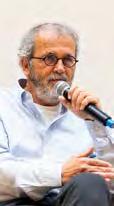
Two years ago a question came in front of the court. Could a private college have classes for Charedim that were separated by gender? I went to Yeshiva University, where we had separate classes and I think everyone was OK. There even is a law in Israel that says separate education is allowed in higher education, but a feminist group petitioned the court against this college. The court ruled that because Israel has a law ensuring basic human dignity, and there is no dignity without equality, and there is no separate but equal, therefore it is forbidden to have separate gender classes except for very specific majors based on what the courts allows them. Understand what is being said here – the court is saying that even for religious reasons, you cannot have separate gender education. That means tomorrow the court could say you cannot have gender separation in a shul or a beit midrash. That is just one example – the court is violating the religious rights of Israelis, and at the moment there are no checks on the court’s power.
I also have a question for Yedidia – why do you assume that the unelected bureaucrats/judge/attorney general wants to do good but the elected Knesset/minister does not represent you, and wants to harm you? My assumption is that the person who got elected is more likely to serve the public good than an unelected bureaucrat appointed by political means.
NDL: Yedidia, you were my law professor at Bar-Ilan University. Already from when I started presenting my first cases to the Supreme Court, it seemed like the court put its opinion above anything that the other branches of government said, with no checks and balances?

YS: The question is how to balance the two branches. Moshe says the main threat is the judiciary, and I think the government is. Which do you think is the more powerful branch of government – who has the money? Who makes the policies? Who tells me how much I need to pay in taxes? Who sends my kids to war? The court is very active, and I agree it has overstepped. But tachlis, the government and legislature are more powerful, and the court is interpreting the law – maybe it needs to be less activist. But that doesn’t change the fact that the government/Knesset is a bigger threat, and so we have to find some middle ground rather than destroying the court’s power totally.
NDL: How can we come to some compromise?
YS: I think judges should have term limits of 12 years. Aharon Barak is a friend of mine, a patriot, a teacher of mine. But it is not good for us that he was a judge for 30 years, it’s not good in America either to have such long terms. I believe the Knesset should have an override on court decisions on issues of identity.
Human rights should be entrusted to the court, not the majority in the Knesset. But where the decision hinges on the character of Israel, about the nature of Israel’s Jewish and democratic nature, like the issue of Charedim in the IDF, then the last word should be with the parliament.
NDL: Prof. Koppel, are you in favor of compromise?

MK: Since the judicial reform came out I have been speaking to my counterparts in other think tanks trying to work out compromises. So all I have been doing is looking for compromise, the question is what are the principles that are important. I am also convinced that Yedidia and I could come to a compromise in a few days, it’s also a question of what the political will of the politicians is.
YS: In the end we are not discussing political theory, but a very real situation in our country. In a course in a university I can very easily discuss how to share power, what is an ideal situation, but we have to discuss the Israeli reality. The perception at the moment in the country is that the courts are liberal, the Knesset and government are conservative, and we are battling who has the power. The reason people are so heated about this issue is not because of political theory, but the deep issues at the heart of our society. We are actually debating the nature of Israel’s future, the vision for Israel, the end goal of Zionism in our generation and our children’s generation. Let’s suppose Moshe and I sit down and we come up with a solution to the question of the courts. Do you think we solved the issue? We covered the lava coming from one place of the volcano, but the lava of disagreement will come out another way. What needs to be done is not to discuss how to balance the power in Israel, but especially for you as religious leaders, your job is much broader. We have major societal splits in Israel, which we must assume will be with us for the next quarter century/generation. We need to work out how we can live together despite the disputes. Divided we stand, but we stand together. That is the real issue at the heart of what is going on in Israel now.
NDL: Thank you very much for this fascinating discussion!

To watch or listen to the full discussion, vist mizrachi.org/debateaboutjudicialreform | 15
G-d Works in Mysterious Ways: The Transformation of Aviv Geffen Rabbi

Aron White
All singers are entertainers, but in the 1990s, Aviv Geffen became much more than that. As an eighteen-year-old, he burst onto the scene in 1992, with angsty, rebellious songs that spoke powerfully to thousands of young Israelis, making him an Israeli cultural icon. His songs attacked the IDF, Judaism, and everything, it seemed, that his parents’ generation stood for. An Israeli

Pink Floyd” was more important to him than the Kotel.
Geffen was also a vocal opponent of the settler movement in Yehuda and Shomron. During the Gaza Disengagement in 2005, he said that he wanted all the settlers removed from Gaza, “whether dead or alive.” For religious parents, Geffen represented all that was wrong with Israeli society, a dangerous cultural threat to the
Today, Aviv Geffen is no less famous, but he has radically changed his tone. In 2021, he performed at Breichat HaSultan in Yerushalayim together with Avraham Fried in a partnership that would have been unimaginable just a few years ago. Last year, he even performed in the settlement of Beit El, where he publicly apologized for his past statements about those

The newfound appreciation for Israel’s religious community has been well received, to say the least. In a Channel 12 TV interview, Geffen described performing for a crowdless concert during the VID pandemic that as broadcast on television, where he dedicated a song to the residents of Bnei Brak, a city that was being savaged in the media for its COVID regulations compliance. “When I came off stage, I
looked at my phone and I had 420 messages. I started reading through them –someone had passed my number on, and I had message after message from Bnei Brak residents saying how much they appreciated it, how much they love my music. ‘You are bringing hope to Israel,’ one message said. I sat there and cried.”
The rock singer’s rapprochement comes at a time when Israeli artists of radically different religious and ethnic backgrounds have created a cultural environment of unity and mutual respect. Singers such as Ishay Ribo, Hanan Ben Ari and Amir Dadon bridge the cultural divide by singing for mixed crowds of religious and secular Israelis.
This past January, comedian Udi Kagan sat with Aviv Geffen and religious singer Evyatar Banai, creating together a remix/ mashup of their songs. As the show progressed, the songs of these two singers merged together, fusing the words of two different worlds into an unlikely harmony. Exhilarated, the thousands of fans in the crowd, religious and secular, sang along. It was a deeply hopeful, even messianic, moment. Can Aviv Geffen, a most unlikely uniter, help the two halves of Israeli society learn to sing in harmony?
(PHOTO: NIR ROITMAN/WIKIMEDIA COMMONS)
16 |
Rabbi Aron White is the Managing Editor of HaMizrachi magazine.
The Cup that Overflows
An Interview with Ishay Ribo
Though he performs while wearing a kippah and with his tzitzit out, Ishay Ribo’s fans include Jews of every type. Nadav Gedaliah spoke with Ishay to get his thoughts on Israel’s social unrest.

How do you see the situation in the country now?
These days everyone who has an opinion will find someone who will come and say the opposite. The difficulty is to accommodate the other person’s opinion even if you don’t agree with it. It stems from anger and frustration on both sides. I don’t come to judge anyone, and we have to accept that we in Am Yisrael are brothers. When there are problems, we should all do some self-introspection and stop reflexively blaming the other side.
How have you personally been impacted by the social unrest?
Baruch Hashem, I don’t personally experience any social strife on a daily basis. It seems to me that the social problems we are having begin, primarily, with the media, which exacerbates the problems and then impacts the public. In real life, on a person to person level, people generally get along, and the challenges we
have are not blown out of proportion. But if I only know what the media is saying about the social difficulties in Israel, I would think the problem is much more dire than it actually is. Fortunately, many people are beginning to realize that we shouldn’t accept the media’s version of our “divide” as if it were Torah from Sinai. Yes, it’s true that the situation is not ideal, but by speaking with one another we can draw closer to each other, and then we realize that the gap between us is not as great as it appears. Conversation builds relationships, so if we say “there is nothing to talk about,” we will widen the rift in our social fabric.
There is a precious Jew with whom I study Massechet Ta’anit once a week b’chavruta. I asked him what he thinks about the situation. He is a G-d-fearing Jew who is lit up by the Torah. He told me this: There was a mashgiach (spiritual guide) in a yeshiva who asked the rosh yeshiva how he could best influence the students. The rosh yeshiva told him: “You must be a kiddush cup that
overflows. As you know, we have a custom to overfill the kiddush cup with wine, so that a little of the wine spills over the sides of the cup. The same is true when it comes to influencing and inspiring other people: when you fill your own vessel in a healthy and holy way, you will impact the environment and those around you.”
This is our job. Instead of saying that the “other people” are wrong, we must fill our own cups with an ayin tova (a good eye) and with giving others the benefit of the doubt. If we do this in all of our social circles, with those who are closer to us and those who are further from us, we will positively impact our environment and our broader society. I don’t see any other way.
This interview was originally published in Hebrew in Olam Katan.
Below: World Mizrachi's Yom HaAtzmaut celebrations featuring Ishay Ribo, April 2023.
| 17
Healing the Rift with an Ayin Tova

Rabbi Dr. Alan Kimche
Seventy-five years ago, as the State of Israel was about to be declared, one of the most hotly disputed issues was whether to include the name of G-d in the Declaration of Independence. No compromise seemed possible. The secular delegates wouldn’t sign if it was included, while their religious counterparts wouldn’t sign if it was omitted. The two groups, both celebrating the birth of the new Jewish state, held radically different views concerning the significance and orientation of their momentous joint project. Ultimately, the signers agreed upon an ingenious solution. The declaration of the State of Israel would use the phrase “placing our trust in Tzur Yisrael (the Rock of Israel),” an ambiguous, symbolic phrase that was open to a multiplicity of interpretations.
This clash was a dark portend of the unstable nature of the State of Israel, in which a potentially explosive religious-secular divide was hardwired into it from its very inception. While this inner tension has been simmering ever since, we are currently witnessing an almost unprecedented outburst of interdenominational conflict.
Today, many secular Israelis view the essence of their identity as secular rather than Jewish, and stridently reject the encroachment of religiosity into the public and private spheres. At the same time, religious communities have grown significantly in number, with many sectors utilizing their newfound electoral power to become more assertive and dogmatic. And finally, in the middle, over a million immigrants from the former Soviet Union are creating their own brand of secular subculture, with
about a quarter of them living in the no-man’s-land of being Israeli but not halachically Jewish.
These tensions are greatly exacerbated by demographic trends. Religious communities are, predictably, growing at very much faster rates than their secular neighbors, who tend to marry later, less often, and have fewer children. By 2050 it is projected that more than 50% of first-graders in Israeli elementary schools will be religious. Naturally, such trends cause great anxiety among secular Israelis, fueling anger about the future character and composition of their state.
Yet with all these tensions, I believe that mutual rapprochement and collaboration is possible. Amid all the difficulties, a few signs of optimism shine through. In particular, two recent public speeches gave me hope for the possibility of reconciliation within Israeli society.
Yoav Galant, a decorated military general and current Minister of Defense, gave a poignant speech when elected to the current government. Himself a non-religious Israeli, he acknowledged that it was only because of the tenacity of Orthodox Jews over two millennia of exile, who held firm to the Torah and prayed three times a day while facing Jerusalem, that we have a state at all. In his eyes, it was the Torah, the Talmud, the siddur, and the traditional rabbinic leadership that preserved the Jewish people, providing them with a national anchor which miraculously preserved them throughout centuries of persecution in the Diaspora. Every one of us, he argued, can trace our ancestry to Jews who lived traditional religious lifestyles. He spoke of the pictures
18 |
of his grandparents and their families on his wall at home, going back four generations, all of them dressed like members of the Yahadut HaTorah faction. “In all my military enterprises,” he said, “I focus on what I am fighting for – the protection of Medinat Yisrael and the Jewish people, but also on my mission as an emissary of those generations who lived with the palpable presence of ‘Hashem Tzevakot,’ ‘The L-rd of Hosts.’” Ending with a verse from Yishayahu, Galant insisted that only through this traditional lens can we understand and explain our presence in our homeland.

It is only possible to maintain a successful partnership between people who do not share the same value systems and perspectives through mutual appreciation. With an Ayin Tova, “a good eye,” it is possible to see the good in each other and to value each other’s contribution to the nation as a whole.
I found another powerful example of recognition and validation in an online video posted by a secular Israeli nurse, who passionately defended the Charedi world. Insisting that she could no longer bear the demonization of the religious community in much of the secular press and media, she cited the large number of Charedi volunteers as evidence of their value and contributions to society. Over 100,000 volunteers from the Charedi world work in organizations such as Zaka, Magen David Adom, Hatzalah, Ezer MiTzion, Yad Sarah, among others. She also praised the immense value of their lifestyle of material modesty, their strong and stable family life, and their loyalty to the Jewish tradition. While many demand that Charedim commit themselves to national
service, this nurse pointed out that many of them are already doing just that, although not through the traditional paths.
These two speeches reflect the value of Ayin Tova, of the ability to see and appreciate the good in others, particularly when they represent opposing sides of the political or religious spectrum. This quality is absolutely necessary on all sides. The urgent healing of this national rift must begin here and will require the practice of mutual appreciation by all sides. May we soon see the return of peace and harmony to our people and our Land.
Rabbi Dr. Alan Kimche
is the Senior Rabbi of the Mizrachi Community in Melbourne. A student of Rav Shlomo Zalman Auerbach zt”l and Rav Chaim Shmuelewitz zt”l, he holds a PhD in Talmudic Law from University College London. Rabbi Kimche founded and led the Ner Yisrael Community in Hendon, London before making Aliyah in 2019.

| 19
How To Build Consensus on Divisive Issues: Four Lessons from the Terminally Ill Patient Law
Rabbi Dr. Shlomo Brody
Suppose you were given the following task: First, pick a highly contentious ethical topic that divides people across the globe, including Israeli society. Then draw up a large, diverse committee empowered to develop a legislative proposal on the controversial subject for the Jewish state. Finally, create a plan to pass the bill with a strong majority in the Knesset. The very idea sounds preposterous. Given the significant fractions in Israeli society, the necessary consensus building seems impossible to achieve.
Yet this is precisely what happened when the Knesset passed Israel’s Terminally Ill Patient Law in 2005. The law was passed after a 59-person (!) committee, headed by Rabbi Professor Avraham Steinberg, debated its provisions for over two years. The committee was composed of rabbis, lawyers, philosophers, and doctors from all streams of Jewish Israeli society along with a few representatives from the Muslim, Christian, and Druze communities. Despite their different worldviews, the committee members were able to bridge these gaps and come to an agreement that they could live with. The success of the Steinberg Committee gives hope for the possibility of reaching agreements on other contentious matters that divide Israeli society. By examining their achievements and failures, we can learn four key lessons on how to address divisive issues.
1. Elected representatives, not the courts, should determine contentious debates
The Steinberg Committee was created in 2000 after a series of high-profile judicial rulings that invoked competing values and trends. In the Ben Ikar case, the Supreme Court ruled that doctors must continue to perform invasive procedures on an 8-year-old boy suffering from cerebral palsy and acute kidney failure. Hospitals should err on the side of treatment. The boy died two years later after another 14 surgeries.
Yet in two cases involving adult patients suffering from Lou Gehrig’s Disease (ALS), the judges allowed doctors to stop treatment and withdraw the ventilators. One of the patients, former IDF fighter pilot Itai Arad, still had to switch hospitals to find a doctor willing to “pull the plug,” an act not clearly permitted under Israeli law. This drew increased public attention as it highlighted the divergence between Israeli hospitals and the practices observed in most Western countries, where ventilators are typically withdrawn.
The Shefer case addressed an infant suffering from Tay Sachs disease. Supreme Court Justice Menachem Elon, the chief proponent of integrating Jewish law (mishpat ha-ivri) into Israeli law, cited halachic sources that permit passive euthanasia but prohibit active mercy-killing. Yet no clear guidelines were provided regarding which types of decisions fall into each category. Elon followed the psak halacha of Rabbi Chaim David Halevi, Tel Aviv’s Sephardic chief rabbi, to assert that removing a ventilator is a permissible form of passive euthanasia, even if it will lead to the immediate death of the patient. Most Orthodox poskim, however, believe that extubation is forbidden if the patient will die quickly afterward.
Finally, in the Lubetzky case, involving a 91-year-old woman with severe dementia, the Supreme Court ruled against the woman’s son who wanted to remove a feeding tube that had been inserted without his knowledge. He claimed that his mother would never have wanted it; the court, however, argued that there was insufficient proof of her wishes. The judges wisely called upon the Knesset to create clearer legislation regarding the withholding and withdrawal of care as well as protocols for establishing advance directives and health care proxies. The court recognized that judges alone could not resolve these questions. It thus prodded the Knesset to act, understanding that divisive matters should ideally be settled by the democratically elected representatives of the citizens.
2. Build a genuinely representative committee and facilitate open discourse
That said, coalition parties can frequently pass legislation without deep dialogue and conversation. There are backroom deals that prioritize political interests over the genuine needs and values of the entire citizenry. In this circumstance, however, a committee of genuine experts was formed to examine every aspect of the complex issue.
Rabbi Professor Steinberg, the committee chair, is a skilled physician and talmid chacham who is highly regarded in both medical and halachic circles (full disclosure: Rabbi Steinberg is a member of Ematai’s rabbinic advisory committee). He created 4 sub-committees – medical/scientific, legal, ethical/philosophical, and halachic – to ensure comprehensive discourse among many of Israel’s greatest minds. Some feel the committee could have been better represented with more women and minorities.

20 |
3. Not everything is an absolute clash between Jewish and democratic values
One of the presumptions in many of the judicial writings was that end-of-life dilemmas presented a clash between Jewish values and liberal democratic values. Judaism, the argument went, promotes the “sanctity of life,” which demands that we try to extend life as long as possible with little regard for the wishes of the patient or family. Democracies, by contrast, promote liberty, including the right to make autonomous choices about how to live and die.
This is the type of superficial thinking that unnecessarily magnifies culture clashes. It’s true that liberal democracy promotes liberty. But as many of the committee’s ethicists recognize, democracies also place limits on liberties when they clash with other values, including the obligation to preserve life. In the case of medical care, most Western countries still place limits on what doctors are forced to provide, such as helping someone die. Liberties are not absolute.
Halacha certainly places a premium on saving lives, even when it entails violating many mitzvot. Yet as the committee’s rabbis noted, halacha also recognizes that we have an obligation to alleviate pain and suffering. Health care is meant to extend living, not to prolong suffering. As the Steipler Gaon taught, the common myth that “whatever one can do to prolong a person’s life, even only for chayei sha’ah (a short amount of time), must always be done,” is not supported in halachic literature. Sometimes it is appropriate to forego interventions that will only prolong a life of suffering, and halacha recognizes that a patient or their family can make such decisions.
With that nuanced perspective, the committee was able to develop a way for patients to provide advance directives to express their preferences regarding end-of-life care, including the option to decline treatments such as surgeries and radiation. It further asserted that a patient may forgo continuing non-continuous or intermittent treatments when they provide minimal or no benefit. This includes dialysis, chemotherapy, and many IV interventions which, by their nature, are administered in cycles

4. Legislation must be updated
The last lesson from the Terminally Ill Law is that no legislative overhaul is going to get everything right on its first try. The law has many accomplishments but did not sufficiently address cases of terminally ill children or circumstances when a person has a terminal diagnosis but is expected to live more than 6 months. The advance directives that were created are helpful but remain overly cumbersome and under-utilized. Most significantly, the law mandated for ventilators to be placed on timers (like Shabbat clocks) so that the central lines would stop providing continuous ventilation unless the timer was reset. This would allow ventilation to fall into the category of “intermittent” treatments which wouldn’t require restarting if it was deemed medically unwarranted. While this proposal gained rabbinic endorsement, it has not been implemented because of problems in administering clinical trials for these machines. These are significant shortcomings which must be addressed by the Knesset.
Overall, however, the Steinberg Committee was a genuine success and shows how Israeli society can address disputes that touch upon core Jewish and democratic values. It provides hope that Israelis of all stripes can cooperate and build a better society together.
Dr.
is the executive director of Ematai, an organization dedicated to helping Jews across the world navigate healthcare choices with Jewish wisdom. Learn more at www.ematai.org

 Rabbi
Shlomo Brody
Rabbi
Shlomo Brody
| 21
A member of the Mizrachi Speakers Bureau mizrachi.org/speakers
Unity at 40,000 Feet
Rabbi Yehoshua Fass
Over the past 20 years, I’ve had the incredible privilege of personally witnessing nearly 80,000 North American Jews fulfill their dreams of making Aliyah. I have been inspired by their exceptional stories and their powerful connection to the Land of Israel. From Holocaust survivors to high school graduates planning to volunteer in Sherut Leumi and the IDF – each and every story is a stunning expression of the fulfillment of millennia of prayers, our longing to return to our ancestral homeland and the modern-day ingathering miracle of kibbutz galuyot.
Over the last two decades, some of my most fulfilling and treasured moments have come while accompanying every one of our 63 charter Aliyah flights. Flying with 250 new olim imparts a jolt of energy that is hard to describe, and I find myself unable to sleep or even sit still in my seat. I use the time to walk through the aisles to speak with the new olim during these incredibly intense moments of anticipation while absorbing the extraordinary mosaic of our nation.
On these flights you experience the true breadth of the Jewish community. Jews from every walk of life, old and young, religious and secular, Democrats and Republicans, Ashkenazim and Sephardim, all unified in their common dream of returning to our ancestral home. For those few hours, we gain a glimpse of an ideal, a taste of a unified people.
Reflecting on these incredible moments, I wonder if this type of unity is only possible at an altitude of 40,000 feet. With so much divisiveness in the headlines and on social media platforms, locally and around the world, the unity of the chartered Aliyah flight seems otherworldly.
Megillat Eicha focuses on the collective suffering of the Jewish people after the destruction of Jerusalem. The theme of shared suffering emphasizes the unity of the community, as everyone is affected by the tragedy. In the aftermath of the destruction of Jerusalem, everyone is in a state of mourning, creating a sense of unity as people gather together to grieve the loss of their precious city and way of life.
This feeling persists even today, with our collective reactions to terrorism, wars, and antisemitic acts. The shared struggle against our oppressors engenders unity and solidarity as we work together to resist our common enemies. However, this unity is fleeting, dissipating when the threat wanes. How tragic that we are only unified in times of danger and oppression!
How is it possible to bind Am Yisrael together through positive means?



The prophet Zechariah, who lived during the time of Shivat Zion, the first ingathering of the exiles from Babylonia, prophesied:
occur on a kanaf, on wings, just as Hashem redeemed us from Egypt םיִרָׁשְנ יֵפְנַכ־לַע, “on eagle’s wings” (Shemot 19:4).
Perhaps Zechariah’s imagery of wings and “flying home” is not describing the culmination of redemption but rather the catalyst for our redemption. Maybe, just maybe, there is something that we, as a people, need to learn from those flying home that can inspire us to be better and do better.

The harmony our olim experience on their Aliyah flights is the secret to positive and long lasting Jewish unity. United in faith and action, olim remind all of Israel that despite our differences, we are one people united by an awesome redemptive vision – a vision that must always remain at the forefront of our consciousness.
This unity at 40,000 ft. can create a contagious sense of unity among all of Am Yisrael. By emphasizing our shared destiny even after the plane touches down in the sweltering summer heat, olim can become our ambassadors of unity, sharing the achdut of Aliyah with the entire nation. May the hope, pride and unity of those magical flights motivate us to transform our prayers into reality and bring a better and more unified tomorrow for us all.

“Thus said Hashem of Hosts: In those days, ten people from nations of every tongue will take hold – they will take hold of every Jew by the corner and say, “Let us go with you, for we have heard that G-d is with you” (Zechariah 8:23).
Zechariah implies that the ingathering of the exiles will occur by assembling a kanaf, literally a corner or a wing. The Malbim comments that the word kanaf refers to the tzitzit hanging from a tallit corner that would reconnect people to mitzvot and lead them to Yerushalayim. This implies that adherence and observance to mitzvot are the means to a glorious geulah
But one cannot ignore the powerful literary allusion to an ingathering that will
הָרָׂשֲע וקיִזֲחַי רֶׁשֲא הָמֵהָה םיִמָיַב תֹוקָבְצ ‘ה רַמָא־הֹכ יִדוהְי ׁשיִא ףַנְכִב וקיִזֱחֶהְו םִיֹוגַה תֹונֹׁשְל לֹכִמ םיִׁשָנֲא .םֶכָמִע םיִקֹל-ֱא ונְעַמָׁש יִכ םֶכָמִע הָכְלֵנ רֹמאֵל
Rabbi Yehoshua Fass is the Co-Founder & Executive Director, Nefesh B’Nefesh.
22 |
A member of the Mizrachi Speakers Bureau mizrachi.org/speakers
HelpPlant Fruit Trees in Israel!
This is the first summer Post Shmitta. Help Israeli farmers who observed Shmitta plant thousands of fruit trees this summer.


Everyone who helps plant a tree receives an authentic certificate. Use Promo code: “HaMizrachi” before Rosh Hashana and a matching donor will DOUBLE your trees FREE!
Partner with a Holy Farmer Share in the Mitzvah and Bracha!


“Zo Artzeinu is a Reliable Organization. They have a good track record of planting trees and keeping the Mitzvot"

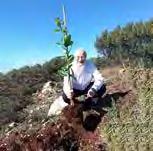


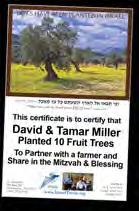

– Rabbi Berel Wein
Rav



“...it is appropriate that everyone partner with a farmer in Israel, and through this partnership HE KEEPS THESE MITZVOT AS WELL... I therefore bless the efforts of Zo Artzeinu’s Tree Planting Campaign”
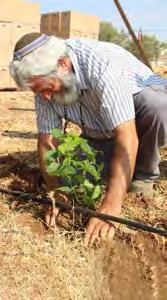
– Rav Yaakov Ariel former Chief Rabbi of Ramat Gan President of the Torah VeHa’aretz Institute
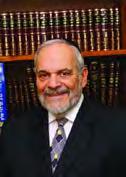
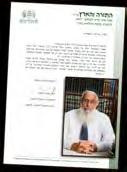
See exciting videos and plant your trees NOW! at
www.IsraelTrees.org
Zo Artzeinu planted more FRUIT trees than any other organization in Israel!
Shmuel Eliyahu Chief Rabbi of Tzfat planting with Zo Artzeinu in the Shomron helping settle the Holy Land.
ALIYAH DI ARI ES
A Box of Postcards
 Odelia Glausiusz
Odelia Glausiusz
There is a second-hand bookshop on Shatz Street in Jerusalem that houses an eclectic mix of literature. If you make your way down the creaky staircase, you’ll find boxes stuffed with yellowing postcards amongst the towering shelves of books. As you flick through them, you’ll spot Hebrew, German, Russian, French and English, glimpses of the incredible assortment of people that have migrated to Israel over the decades. There is one from TIME magazine, informing Mr. Mati Alon in Jerusalem that while his comments “were circulated among several editors for their information and consideration,” they could not, regrettably, be published. A hastily scribbled postcard from David, with a picture of the Bodleian Library in Oxford on the back, to tell Abraham that he’s off to the States (but Abraham can now write to him at the department of Political Science in Berkeley). A chatty letter from Pearl in Johannesburg, dated 13th October 1964, addressed to “Matilda, Mishael + Fam (+ CATS).” Like a walk through the shuk in Jerusalem, these old postcards open a fascinating window into the rich diversity of Israeli society.
Since making Aliyah, I’ve been struck by the multitudinous, divergent worlds that exist side-by-side in this tiny country. It’s not just a matter of Chareidim and chilonim, Israelis and Arabs, right and left. There’s Chassidish and Yeshivish, Dati Light and Dati Leumi. Ethiopian Jews, Moroccan Jews, French Jews. The idealistic, remote hilltop yishuvim in Yehuda and Shomron and the restaurants, clubs and skyscrapers of Tel Aviv.
There are heart-warming stories of people connecting across the divide. On a recent El Al flight to Israel, I saw a man with a black coat, flying tzitzit and a long gray beard give a warm hug at the end of the flight to the bareheaded man sitting next to him in a t-shirt, shorts and flip flops. Moments like these make me hopeful. But the recent protests over judicial reforms at times seem almost dystopian. The newspapers were full of photos showing dense crowds of passionate people blocking highways and clamoring with police. “A deeply divided Israel limps toward its 75th birthday under weight of internal rift,” ran a headline from The Times of Israel, shortly before Yom HaAtzmaut
The interesting thing is that all of the protests – whether for or against the reforms – have been accompanied by a sea of Israeli flags. People are angry, but it’s because they care deeply about the fate of this country. Except all of this care, all of this passion, is driving people apart instead of forging them together.
A 1956 article in The Jerusalem Post reported the news that Miss Israel – a certain Rina Weiss – had come in third in the Miss World Contest. The article ends: “[Miss Israel] said that she was going to spend her prize traveling through England meeting the British as her way of saying “Thank You” for getting her out of a concentration camp during the War (she was rescued from Bergen-Belsen by British troops).”
24 |
Oh, the incongruity of it all! A Jewish girl from war-torn Europe, a Holocaust survivor living in Tel Aviv, and a model participating in an international beauty pageant. So many clashing realities in one short, matter-of-fact piece. But the truth is, Rina Weiss’ story is the story of the people of Israel. Everyone Jew in Israel has a narrative that stretches back over the generations to ancestors who arrived in Israel from all corners of the globe – to a young, bright eyed kibbutznik who escaped Russian pogroms, to a Mizrachi Jew armed with his rich traditions, or to a lone Holocaust survivor who landed here with nothing and built his life from scratch. People like Mr. Mati Alon, who still enjoyed reading TIME magazine, Abraham with his academic friend David, and a friendly South African family with pet cats.

Sometimes, as a new immigrant, I feel out of place here. But where we’ve come from is important, for everyone here has come from somewhere else. It is the very thing we all have in common, even with the Israelis who’ve lived here their entire lives.
Here’s another striking article from The Jerusalem Post, entitled ‘Shabbat Shalom,’ this time from 1948:
Mingling with the many complainants that came to the Mahne Yehuda Police Station in Jerusalem late on Friday afternoon was an aged oriental Rabbi in a handsome kaftan. He made straight for the room of the officer in charge.
Challenged by the constable on duty, who suggested that in a police station one doesn’t just walk straight past the sentry, the Rabbi shyly admitted that all he wanted to say was “Shabbat Shalom” to the members of the all Jewish police force. He was invited to sit down and have a cigarette before the Sabbath began.
Imagine the scene. A stately rabbi, dressed in his Shabbat finery, sweeping into the police station. The presumably secular officers, baffled by this man’s assured stride and his obviously foreign appearance. The tension dissipates when they realize that all this man wants to do is say “Shabbat Shalom.” And so they all sit down and have a cigarette, and talk. What did they talk about? Perhaps about where they all came from, marveling that this new country of theirs exists, or perhaps musing about where it will one day go. Maybe they just spoke about the weather. Either way, the ‘aged oriental rabbi’ from this story respected the police force, and they, in turn, respected him. He respected them because he didn’t see a secular police force as an antagonist, but rather as an exciting part of the new Jewish state. He saw that he and the police force had the same goal – they all wanted to maintain the safety and well-being of their new country. And they had all come from somewhere to make that dream a reality.
George Orwell once reflected, “Looking back through my work, it is invariably where I lacked a political purpose

that I wrote lifeless books and was betrayed into purple passages, sentences without meaning, decorative adjectives, and humbug generally” (Why I Write). It was when Orwell fused “political purpose and artistic purpose into one whole” that he was able to write books weighted with meaning, books like 1984 or Animal Farm. All of the care, all of the passion that has driven people to protest – it all stems from the same desire, the same sense of political purpose: to build a healthy, thriving Jewish country. If we lose sight of this common goal, then, like Orwell, we’ll be betrayed into “purple passages” and “sentences without meaning.”
Israel is a nation made up of people carrying disparate, unlikely stories. Yet all these stories are united by that one overlapping chapter, the one where we all settled here. If we learn to respect everyone else’s stories, learn to see our own stories reflected within them, then, maybe, we could all begin to write the next chapter together – and write it well.
| 25
Odelia Glausiusz recently moved to Jerusalem where she works as a freelance writer and content curator.
Keeping the Vision Alive: A Family Member Teaches a New Generation the Torah of Rav Kook
he teachings of Rabbi Avraham Yitzchak HaKohen Kook have touched the lives of hundreds of thousands of people, but for Rabbi Dov Kidron, the connection is deeply personal. “My great-grandfather who I am named for was Rav Dov Kook, Rav Avraham Yitzchak’s younger brother. There were eight siblings who were born in Europe and gradually made their way to Israel –they were big Zionists!”
World Mizrachi has partnered with Rav Kidron in an exciting new podcast entitled Orot MiMizrach, a 12-part series about the Torah of Rav Kook. Rav Kidron is an experienced Torah teacher, giving two daf yomi classes each day (one in English and one in Hebrew), but it was a conversation with his brother Nadav that sparked this new project. “My brother had been living in Boca Raton, Florida, for a few years, and he told me that while people may recognize the name ‘Rav Kook’ in the Diaspora, most people do not know much about his Torah or his opinions and philosophy. Rav Kook was such a giant; it is a tremendous shame for his Torah not to be well known. And so, together with World Mizrachi, we are excited to produce this series which will shine a light on this remarkable Torah giant.”
This year will mark the 88th anniversary of Rav Kook’s passing, on the 3rd of Elul, 5695 (1935). “Even though he lived in a different generation, so many of Rav Kook’s teachings remain relevant and are even more needed today than in his own lifetime. In the early 20th century, many people were involved in large movements focused on the collective, whether Zionism, socialism, or nationalism. Today, in the 21st century, the dominant culture and ideology is far more individualistic and concerned with individual rights, liberties and expressions of identity. Rav Kook wrote extensively about the klal, the collective identity and mission of the Jewish people, and particularly in our times it is crucial for a new generation to learn his ideas and approach.”

In addition to teaching some of Rav Kook’s big ideas, on topics such as relations with non-observant Jews, Zionism and universality, Rav Kidron incorporates anecdotes and vignettes from Rav Kook’s life that add flavor to the 20-minute podcasts. “My grandmother would tell us stories about Rav Kook as he was in the house, coming into the kitchen to ask how he could help out on Erev Shabbat. In Iggrot Re’aya, the letters of Rav Kook, there are letters he wrote to my great-grandfather Rav Dov, in the years when Rav Kook was already in Eretz Yisrael and Rav Dov was still in Europe.” Rav Dov Kook would later become the Chief Rabbi of Afula in 1925, as well as the head of Machon Harry Fishel.
Through this combination of ideas and stories, Orot MiMizrach will shine a new light on the remarkable teachings of Rav Kook. Beginning July 30 (12 Av), make sure to join World Mizrachi as we embark on a fascinating tour of the Torah of Rav Kook. You can subscribe and listen to Orot MiMizrach on Spotify, Apple Podcasts, Google Podcasts, and all your favorite podcast platforms.

26 |
PRESENTED BY WORLD MIZRACHI
HOSTED BY
A 12-part series of 20-minute podcasts on the remarkable persona and teachings of Rav Kook
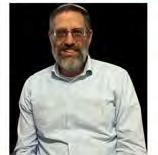
SERIES TOPICS
1. Rav Kook’s Unusual Greatness
2. Towering Halachic Authority

3. Attitude to Non-Observant Jews
4. The Land and State of Israel
5. Vegetarianism and Animal Sacri ces
6. A Burning Love For All
7. The Singular Importance of Unity
8. A Unique Approach to Universality
9. Rav Kook’s General Worldview
10. The Breadth and Depth of Teshuva
11. The Use of Modern Technology
12. The Hidden and the Revealed
The podcast series will run over 12 consecutive weeks with a new episode available every Sunday. The series will begin a er Tisha B’Av on 12 Av / July 30th.
חָרְזִמִּמ תוֹרוֹא
MIZRACHI
NEW
PODCAST!
Visit mizrachi.org/OrotMiMizrach to listen and subscribe
RABBI DOV KIDRON
FIXING THE BIG PICTURE: IS AHAVAT YISRAEL POSSIBLE?
Rabbi Reuven Taragin

Why we mourn
Both of our annual communal periods of mourning – the Three Weeks and the Omer – were caused by dysfunctional relationships between Jews. The Three Weeks commemorate the churban (destruction) of the Beit HaMikdash and our exile from Eretz Yisrael Chazal attribute the churban to the sin of sinat chinam (baseless hatred). Though the Jews of the Second Temple period were involved in Torah, mitzvot, and chessed, they (still) hated each other and were therefore exiled.
Baseless hatred’s ability to cause churban teaches us that this sin is as severe as the three cardinal sins, which caused the destruction of the first Beit HaMikdash. This explains why many Tanna’im saw healthy relationships between Jews as central to Torah and mitzvot, and why Rabbi Akiva considered loving other Jews as the Torah’s greatest principle.
The mitzvah of “v’ahavta l’rei’acha kamocha,” of “love your fellow as you love yourself,” demands more than merely avoiding hatred; Jews are commanded to actively love each other as well. Rabbi Akiva’s twenty-four thousand students perished because they did not show respect to one another. Though the students may have actually had respect for one another, not showing respect was enough to seal their fate.
The lesson is clear. Though the Torah commands many mitzvot guiding our relationship with G-d, the mitzvot that govern interpersonal relationships are the most important. Disregarding them causes churban and subsequent mourning.
The Sefat Emet and Rav Kook reach the natural conclusion. If churban is caused by baseless hatred and disrespect, we merit redemption through love and respect. The Chafetz Chaim said that: “If one shul could maintain proper peace and harmony among its members, we would merit the coming of Mashiach.” Sadly, accomplishing this is easier said than done.
Why we are meant to love
We are meant to love all people, because we are all Hashem’s creations. By loving and showing respect to His creations, we show respect to Hashem Himself. Hillel said that Aharon was “oheiv et ha’briyot u’mekarvan laTorah,” “One who loved creations and drew them close to Torah.” The Ba’al HaTanya explains that Hillel used the word “beriyot,” “creations,” to include even those we see no reason to love other than that they were created by G-d. Though Chazal use the term “sinat chinam,” they never use the term “ahavat chinam.” This is because love of Hashem’s creatures is never baseless. Hashem’s creation is reason enough to love all people.
Though all humans are beloved G-dly creatures, the Jewish people are uniquely beloved, as we are all Hashem’s children. This is why “v’ahavta l’rei’acha ka’mocha” applies particularly to Jews and is followed by the words “Ani Hashem.” Hashem created all people in His image and chose all Jews as His children.
But how?
When it comes to ahavat Yisrael, there is sadly a wide gap between theory and practice. Though we all recognize the mitzvah’s importance, we fall short of the goal. How can we bring ourselves to love all Jews?
Pirkei Avot teaches that the wise man is the one who learns from all others. Rav Nachman of Breslov argues that this is also “where love lies.” We love the people who make us happy and enrich our lives, and so the key to loving others is taking them seriously and learning from their traits and ideas.
Loving by learning from others hinges upon our ability to focus upon the good in others. Rav Nachman explains that this is the meaning of Pirkei Avot’s exhortation to “judge all people favorably.” Every person, even the worst sinner, has positive traits. When we choose to “judge” people by these positive traits, we inspire them and ourselves to live up to this positive image.
“Save us from the jealousy people have for each other... In contrast, place in our hearts the ability to see the good in our peers, not what they lack… And strengthen our bond with love to you” (Rav Elimelech of Lizensk).
Fixing the big picture
Our people’s first exile began with Yosef and his brother’s inability to see the good in each other. Hundreds of years later, our first attempt to return to Eretz Yisrael was derailed on Tisha B’Av by the meraglim’s inability to see the good in the Land. Even after we entered the Land, ongoing hatred and disrespect caused the ultimate churban and the death of Rabbi Akiva’s students, leading to two thousand years of exile.
As we mourn these events and their implications, let us aim to fix their cause, and to merit redemption through love and respect. Let’s accomplish this by greeting each other with a smile and generating positivity through focusing on the good in one another. May doing so merit the redemption of ourselves, the Jewish people, and the entire world, speedily in our days.
This article is an abridged version of a longer article that can be found at www.mizrachi.org/hamizrachi
 Rabbi Reuven Taragin is Educational Director of Mizrachi and Dean of the Yeshivat Hakotel Overseas Program.
Scan here to join Rabbi Taragin’s daily Divrei Torah WhatsApp group
Rabbi Reuven Taragin is Educational Director of Mizrachi and Dean of the Yeshivat Hakotel Overseas Program.
Scan here to join Rabbi Taragin’s daily Divrei Torah WhatsApp group
28 |
A member of the Mizrachi Speakers Bureau mizrachi.org/speakers
Standing Up While Seeing One Another
Rabbanit Shani Taragin

During the nine days leading up to Tisha B’Av, we usually blame sinat chinam, baseless hatred, for the conflicts that plague our society. Very often, however, conflicts are not based on petty reasons but on disagreements over profound issues of principle. Through the classic story of Kamtza and Bar Kamtza (Gittin 55b), Chazal explain the complexities of hatred and the political factors which foster animosity:


The destruction of Jerusalem came about through Kamtza and Bar Kamtza... A certain man had a friend named Kamtza and an enemy named Bar Kamtza. He once made a party and said to his servant, “Go and bring Kamtza.” The man went and brought Bar Kamtza. When the host found him there he said, “See, you are mocking me; what are you doing here? Get out.” Said the other, “Since I am here, let me stay, and I will pay you for whatever I eat and drink.” He said, “No.” “Then let me give you half the cost of the party.” “No,” said the other. “Then let me pay for the whole party.” He still said, “No,” and he took him by the hand and threw him out. The story begins by introducing Kamtza, meaning “the miserly one,” and Bar Kamtza, the “son of the miserly one” – the former a friend, and the latter a foe of the anonymous host. Our ill-feelings toward one another begin with how we identify ourselves. Are we self-centered, or sufficiently open-minded and open-hearted to see others? Kamtza and Bar Kamtza reflect an egocentric society of “self” – a father and son with enmity towards others and perhaps even between themselves. The Talmud continues with the even more inexplicable aggravation of the conflict through Bar Kamtza’s response: Said [Bar Kamtza], “Since the Rabbis were sitting there and did not stop him, this shows that they agreed with him. I will go and inform
against them to the Government.” He went and said to the Emperor, “The Jews are rebelling against you.” He said, “How can I tell?” He said to him: “Send them an offering and see whether they will offer it.” So he sent with him a fine calf. While on the way he made a blemish on it… The Rabbis were inclined to offer it in order not to offend the Government. Said Rabbi Zechariah ben Abkulas to them, “People will say blemished animals are offered on the altar”... R. Yochanan thereupon remarked: “Through the scrupulousness of Rabbi Zechariah ben Abkulas our House has been destroyed, our Temple burnt, and we ourselves exiled from our Land.”
After being publicly embarrassed with no defense from the Rabbis, Bar Kamtza seeks revenge through the Roman Emperor! He was clearly a powerful man, with access to prominent Roman officials, who was willing to cooperate with the Romans. Perhaps this was the root of the host’s animosity towards him; the host belonged to the anti-Roman faction, as were the Rabbis invited to his party. And so the underpinning of the story is not baseless hatred but rather a fundamental conflict of principles regarding the future of the Jewish people. Debates were heated, with each side convinced the other would lead the nation to catastrophe.
The story of Kamtza and Bar Kamtza addresses the complex challenge of dealing with legitimate disagreements over issues of judicial reform, religious and political affiliation, security policies, and other matters of principle. The tragic sin occurs when we turn our disagreements over issues into conflicts filled with hatred for our fellow Jews on the other side of the debate. The anonymous host is not criticized for not inviting Bar Kamtza to his parlor meeting, but for not finding room in his heart and home to appreciate that Bar Kamtza shared his goal of national
survival. Had he done so, a disastrous civil war would have been avoided. We must not respond to debate with hatred, as other societies do; we cannot let our principled differences prevent us from seeing one another as brothers and friends. Rabbi Yochanan’s closing remark indicates that Rabbi Zechariah ben Abkulas repeated the sin of the silence of the Sages at the party. They were steadfast in their views – political and halachic, and yet both chose not to choose, not to see the real problems of hatred and potential destruction and not to speak when they should have spoken.
The story of Kamtza and Bar Kamtza reminds us that it’s not enough to avoid petty arguments to bring healing to our people. To truly heal our society, we must first understand its complex tensions. Then, when standing for our values and principles, we must be wary of our speech and never forget that those on the other side are our brothers and sisters. May we merit to love one another, even as we disagree!
Rabbanit Shani Taragin is Educational Director of Mizrachi and the Director of the Mizrachi-TVA Lapidot Educators’ Program.
| 29
A member of the Mizrachi Speakers Bureau mizrachi.org/speakers
Fasting on Tisha B’Av when the Beit HaMikdash Stands
Rabbi Yosef Zvi Rimon

Maimonides states that the Jewish people fasted on Tisha B’Av during the period of the Second Beit HaMikdash:
“In the days of the Second Beit HaMikdash they did not fast on the tenth of Tevet, nor on the seventeenth of Tammuz; but rather whoever wished to fast – fasted, and whoever did not choose to – refrained from fasting. Therefore the [emissaries for the testimony concerning Rosh Chodesh] were not sent out on Tevet and Tammuz… leaving the choice to the people regarding these days, whether to fast or not… And they did fast on Tisha B’Av despite being given a choice, since on this date our people suffered multiple tragedies” (Commentary to Mishnah, Rosh Hashanah 1:3).
The Sfat Emet (Rosh Hashanah 18b) explains that when the Beit HaMikdash was intact, the people only fasted on Tisha B’Av during periods of turbulence and subjugation to other nations, but not during times of peace. However, the straightforward interpretation of Maimonides’ words is that they always fasted on Tisha B’Av. Maimonides’ opinion seems odd. How is it possible that people fasted when the Beit HaMikdash was intact?
The simple explanation seems to be that the Second Beit HaMikdash was not complete. The returning exiles themselves wept because of this. The Second Beit HaMikdash lacked two vital elements –the Ark and Divine Revelation, and so the people continued to mourn the destruction of the First Beit HaMikdash, when these elements were present.

Though this answer is certainly correct, there are additional reasons why the people continued to fast on Tisha B’Av. We learn from the Sfat Emet that we fast not only because of the past, but also because
of the present situation. Our current troubles are an extension of the destruction of the First Beit HaMikdash. This is why the Kinot (lamentations) on Tisha B’Av include many events not directly connected to the destruction of the Beit HaMikdash, but which describe other troubles in the course of our history, such as the persecutions of 1096, the burning of the Talmud, the Holocaust, and the uprooting of Gush Katif and its residents.
Secondly, the fast reminds us that even when everything seems fine, and the Beit HaMikdash is built, we must live righteously; the situation can, G-d forbid, change. Sometimes we have it so good that we fail to recognize our good fortune. Fasting even in good times is significant because it reminds us of periods in the past when we were not so fortunate, and lacked what we have now. Sometimes, one can see and appreciate the light only when it is contrasted with darkness. Only by reflecting upon the destruction can we truly perceive the supreme and wondrous reality of the Divine Presence. This is the goal of the Tisha B’Av Kinah “Eish Tukad B’kirbi,” “A Fire Shall Blaze Within Me,” which enumerates the wonderful things that we had when the Beit HaMikdash stood, which are missing today.
Hashem has granted us many kindnesses. We have been fortunate enough to return to our homeland after two thousand years. We have been granted a state of our own and have seen much of Yerushalayim returned to us. We see the Torah flourishing. However many elements are still missing. Sadly, the Beit HaMikdash remains destroyed. We do not yet have full control of our Land, and there is still a spiritual deficiency, for we do not yet experience the Shechina (Divine Presence) among us and Hashem’s rule over us.
At this time of the beginning of the redemption, Tisha B’Av takes on a unique character. We have achieved so much, we have seen the beginning of our redemption – but we must also reach ever higher. The higher we rise and the more we enjoy the gift of freedom, the more concern we must show for those who are less fortunate and suffer hardship, and help them, too, fulfill their great dreams. Tisha B’Av reminds us that there are many people in our society, including lone soldiers, at-risk youth and others – who need our love and support. Showing solicitude for these groups is by no means for their benefit alone. By elevating their lives and enabling them to aspire to greater heights, all of Am Yisrael will reach a higher plane of existence, and will, please G-d, soon merit complete redemption!
Rabbi Yosef Zvi Rimon is Head of Mizrachi’s Educational Advisory Board and Rabbinic Council. He serves as the Chief Rabbi of Gush Etzion, Rosh Yeshivah of the Jerusalem College of Technology and is the Founder and Chairman of Sulamot and La'Ofek.
30 |
A member of the Mizrachi Speakers Bureau mizrachi.org/speakers
Whither the Torah She’ba’al Peh?
Rav Meir ben Baruch (c. 1215–1293), the Maharam of Rothenburg, penned Kinah 41 that we read on Tisha B’Av. The horror and sorrow expressed is deeply felt as the Maharam personally witnessed unspeakable atrocities committed against the Jewish community by Christian authorities in France and Germany. The kinah refers specifically to the fateful date of June 17, 1242, when twenty-four wagons filled with handwritten Jewish manuscripts were incinerated in Paris.
Two years earlier, at the Disputation of Paris, also known as the Trial of the Talmud, Tosafists including Rav Yechiel ben Yosef of Paris, head of the Yeshiva of Paris, and Rabbi Moshe ben Yaakov of Coucy, were forced by Nicholas Donin, a Jewish convert to Christianity, to defend the Talmud from accusations that it contained blasphemous passages about Christianity. In letters sent to the Bishop of Paris, Pope Gregory IX claimed that the Talmud contained “matters so abusive and so unspeakable that it arouses shame in those who mention it and horror in those who hear it.” He also said of the Talmud: “This too is the chief factor that holds the Jews obstinate in their perfidy.”
The disputation resulted in Jewish books, specifically copies of the Talmud, being violently collected from shuls and batei midrash throughout France. These hundreds of volumes were then burned, a great catastrophe for worldwide Jewry in the times before the printing press. In the Maharam’s kinah, we sense his fear that the Torah would be forgotten, as there might be no books from which to learn!
The Maharam equated the catastrophe of the burning of the Talmud with the burning of the Beit HaMikdash. Without the Torah She’ba’al Peh, without the Oral Torah, there is no Knesset Yisrael
Sadly, the story does not end there. R’ Hillel of Verona, a student of R’ Yona of Girondi, author of the Shaarei Teshuvah, wrote a letter to Rav Yitzchak the Doctor in which he blamed the burning of the Talmud on a scandal that occurred not too
long before and in the exact same place. He is referring to the burning of the works of the Rambam.
The background to this is the translation into Hebrew of the Rambam’s philosophical works, Moreh Nevuchim, “The Guide to the Perplexed”, and Sefer HaMadah, the Rambam’s introductory work to his Yad HaChazakah. Much debate ensued around the legitimacy of these books; many criticized them, and others went so far as to burn them. On the burning of the Rambam’s writings and the subsequent tragedy of the incineration of the Talmud, Rav Hillel writes: “Don’t ask who knows if those decrees happened due to the burning of the ‘Madah and Moreh.’ I will answer that there is a sign. There were not even forty days between the burning of the Rambam’s writings and the [burning of the] Talmud and it took place in the same location, with the ashes of the writings of the Rambam mixing with the ashes of the Talmud. This was true and known by Jew and gentile alike and soon everyone will be aware that it was decreed from Heaven. From above a fire was sent because the Rambam’s writings were destroyed.”
The catastrophe and anguish over the destruction of these precious Torah books cannot be underestimated. But in these calamities we may find a lesson that is both contemporary and relevant.
The eventual destruction of the Rambam’s writings was caused by a legitimate concern regarding the introduction of external philosophical ideas into the mainstream of Jewish scholarship. The debates that ensued in a milieu of confrontation and animosity could have led to permanent extinction of books that today hold an eminent place in the shelves of every mainstream yeshiva and beit midrash
Perhaps if we would take to heart the connection made by Rav Hillel and his teacher Rabbeinu Yonah of Gerondi, we would see that the greatest challenge to our existence as Torah-based communities worldwide is a level of tolerance and acceptance of Torah thinking that is different from our own. Hashkafic debate and
analysis – the continued development of the Oral Torah in every generation – challenges us all to maintain a path that is halachically valid and true to foundational Torah truths.


Rav Kook, in a speech given at the opening of the Hebrew University at Mount Scopus, spoke of the fears that we all have in allowing change into our private domains: the fear of changing winds and the fear of embracing new aspects of modernity. We fear because we are vulnerable. We worry that we have not absorbed our values deeply enough to withstand challenges from our surrounding environment. And this fear and vulnerability is legitimate and should not be underestimated.
This fear should motivate each one of us to strengthen our core principles, our foundational values and our personal commitment. All this brings growth. But when our fear motivates us to destroy the “other,” we should bear in mind the lament of the Maharam at the burning of the Talmud: “Without the Torah She’ba’al Peh, there is no Knesset Yisrael.”
The Torah She’ba’al Peh is a dynamic organism entrenched in the timeless Torah She’bichtav, the Written Torah. It paradoxically requires both stabilization and novelty. Though novelty elicits fear, being grounded in Torah She’bichtav allows each of us from across the spectrum of the Torah world to accept our differences. Once we have done that, our engagement with the broader community of Am Yisrael will be founded upon pride, stability and unwavering commitment.
In doing so we ensure the survival of Am Yisrael, with all its eclectic differences.
Rabbi Jonathan Altman
| 31
Rabbi Jonathan Altman is a Rabbi of the Yeshiva Mizrachi Community in South Africa.
Creating Freedom Without Anarchy, Order Without Tyranny
Rabbi Lord Jonathan Sacks ל״צז
On July 8th, 2014, Operation Protective Edge began in Gaza. Following the kidnap and murder of three Jewish teenagers and rocket fire into Israel, Israel launched what would become a six-week military operation, in which 73 Israelis were killed. During those tense days, Rabbi Sacks published the following article.
Nine days from now, Jewish communities around the world will sit in collective mourning on Tisha B’Av, the day of Jewish tears. So many tears. For the destruction of the First and Second Temples. For the defeat of the Bar Kochba rebellion. For the expulsion of Jews from England in 1290 and Spain in 1492. For the day on which Himmler was given the go-ahead for Die Endlösung, “The Final Solution,” that is, the extermination of the Jews of Europe.

Yet as one of the generation born after the Holocaust, whose identity was shaped in the wake of the Six Day War, I believed that Tisha B’Av and its sensibility belonged to the world of my parents and theirs. It was not ours. They were haZorim b’dima and we were b’rinah yiktzoru. They had sown in tears so that we could reap in joy.
The past three weeks were very difficult for Jews around the world but above all for Am Yisrael be-Medinat Yisrael. Rocket attacks from Hamas intensified, resulting in a sustained assault of a kind no country in the world has had to face: worse than the Blitz in World War II. (At the height of the Blitz, on average 100 German missiles were launched against Britain every day. On average during the present conflict in 2014, Hamas has fired 130 missiles a day against Israel). We felt the tears of the injured and bereaved. We felt for the Palestinians too, held hostage by Hamas, a ruthless terrorist organization.
Much of the world has condemned Israel for fulfilling the first duty of any government anywhere: to defend its citizens from an attack on their lives. What is the alternative in a situation in which Hamas was storing missiles in schools, placing rocket launchers beside hospitals and mosques, using ambulances to transport terrorists,
placing entrances to tunnels under apartment blocks, and using an entire civilian population as human shields? As Colonel Richard Kemp, a former commander of British troops in Afghanistan, wrote, Israel uses “the most sophisticated and comprehensive means of avoiding civilian casualties yet employed by any army in the world.” And as Princeton political philosopher Michael Walzer has argued, it is “a central principle of just war theory that the self-defense of a people or a country cannot be made morally impossible.”
The worldwide tide of protest was not merely against Israel. It was, according to the foreign ministers of France, Germany and Italy, also against Jews. Did anyone think that 120 years after the Dreyfus Trial and seventy years after the Holocaust the cry of “Death to the Jews” would once again be heard in the streets of France and Germany? But it happened. The new antisemitism is not the old antisemitism, but it tells us that the world’s oldest virus of hate has mutated again. The tears of Tisha B’Av have not yet ended.
My concern here, however, is not with the political, moral and legal issues of what constitutes a just war, but rather with the intense spiritual question that arises for us at this time of year in the context of Jewish history as a whole. Why so much suffering for so long? Have we not lived long enough in the valley of tears? “Shall the Judge of all the earth not do justice?” What is the meaning of this hour? What does it tell us about the Jewish destiny and fate?
At the beginning of time, G-d created the universe in a burst of energy that eventually gave birth to stars, then to planets, then to life. Among the millions of forms of life that eventually emerged was one different from all the others: Homo sapiens,
the only life-form known to us capable of asking the question, “Why?” On this one being, G-d bestowed the highest token of His love, setting His image and likeness on every human individual regardless of colour, culture, creed, or class. He invited humanity to become His “partners in the work of creation,” calling us to create what He Himself had created: freedom and order, the order of nature and the freedom that allows humans, alone in the universe, to choose between good and evil, healing and harm.
The Torah tells us early on how humanity failed. They did so in two ways. They created freedom without order or order without freedom. That is still the human tragedy.
Freedom without order was the world before the Flood, a state of anarchy and chaos that Thomas Hobbes famously described as “the war of every man against every man,” in which life is “nasty, brutish and short.” That is the world today in Syria, Iraq, Nigeria, Somalia, Mali, the Central African Republic, and other conflict zones elsewhere, a world of failed and failing states and societies wracked and wrecked by lawlessness. That is freedom without order, what the Torah calls a “world filled with violence” that made G-d “regret that He had made man on earth, and it grieved Him to His very heart.”
But the alternative was a world of order without freedom, epitomized in the Torah by the Tower of Babel and Egypt of the Pharaohs, civilisations that achieved greatness at the cost of turning the mass of humanity into slaves. That too is an affront to human dignity, because each of us, not just some of us, are in the image of G-d.
32 |
Having seen these two kinds of failure, G-d called on one man, Abraham, and one woman, Sarah, and said: I want you to be different. I want you and those who follow you to create, out of a tiny people in a tiny land, a nation that will show the world what it is to sustain both order and freedom; what it is to build a society on the threefold imperative of love of G-d “with all your heart, with all your soul and all your strength,” love of our neighbour “as yourself,” and love of the stranger, a command reiterated in the Torah, according to the Sages, 36 times.
I want you to become the people who keep the laws of tzedek and mishpat (justice and law), chessed and rachamim (grace and mercy), not because of the coercive power of the state but because you have taught your children to hear the voice of G-d within the human heart. I want you to show the world how to create freedom without anarchy and order without tyranny. That has been the Jewish mission for the better part of 4,000 years.
The result was that Jews found themselves, time and again, in the front line of the defense of humanity. Where there is freedom without order – anarchy – everyone is a potential victim. Jews played no special part in this history. But where there is order without freedom – imperialism in all its guises – Jews have often been the primary targets because they are the people who more than any other have consistently refused to bow down to tyrants.
That is why they were attacked by the empires of the ancient world, Egypt, Assyria and Babylon; of classical antiquity, Greece and Rome; the Christian and
Muslim theocratic empires of the Middle Ages; and the two greatest tyrannies of the modern world, Nazi Germany and Stalinist Russia. The face of tyranny today is radical political Islam in the form of Al Qaeda, ISIS, Boko Haram, Islamic Jihad, Hizb at-Takrir, Hezbollah, and Hamas that are creating havoc and destruction throughout the Middle East, Sub-Saharan Africa and parts of Asia. They constitute a real and present danger to the liberal democracies of Europe also. And though Israel is an almost microscopic element in this global disturbance, it is once again in the front line.
Why? Because Jews throughout history have recognised tyranny for what it is, and have refused to be intimidated by power, threat, terror and fear. Somehow, in the most dangerous region of the world, Israel has created a society of freedom and order: a free press, free elections and an independent judiciary on the one hand, and constant innovation in the arts and sciences, agriculture, medicine, and technology on the other.
Israel is not perfect. We believe – the Hebrew Bible is the most self-critical national literature in all of history – that “There is no one on earth who is so righteous that he does only right and never sins” (Kohelet 7:20). But today’s Israel has been doing what Jews have been charged to do since the days of Abraham and Moses, to create freedom without anarchy and order without tyranny. If that puts Israel on the front line yet again, there is no nobler cause in which to be so.



Moshe’s words ring out today with as much power as they did thirty-three
centuries ago: “Choose life so that you and your children may live.” If Hamas were to do that one thing, the Palestinians of Gaza would have peace. Innocent lives would not be lost. Palestinian children would have a future. Because Israel did make that choice, it has created a society of order and freedom while all around it rage the godless fires of chaos and terror. Although yet again we will shed tears this Tisha B’Av, let us thank G-d for the courage and greatness of the people of Israel. For, knowing what we know of history, we would surely rather have the State of Israel and the condemnation of the world than, G-d forbid, no State of Israel and the sympathy of the world.
“Hashiveinu Hashem eilecha v’nashuva chadesh yameinu kekedem. You brought us back, O G-d, and we returned. Help us to renew our days as of old,” in peace, speedily in our days. Amen.
The Rabbi Sacks Legacy perpetuates the timeless and universal wisdom of Rabbi Lord Jonathan Sacks as a teacher of Torah, a leader of leaders and a moral voice. Explore the digital archive, containing much of Rabbi Sacks’ writings, broadcasts and speeches, at www.rabbisacks.org, and follow The Rabbi Sacks Legacy on social media @RabbiSacks.
favorite
are available to read and share online at mizrachi.org/hamizrachi ALSO AVAILABLE ONLINE! | 33
Your
articles
The Netziv vs. Rav Chaim: Zionism and Love of the Land
Rabbi Meir Bar Ilan ל״צז
Rabbi Naftali Zvi Yehuda Berlin zt”l (1816–1893), commonly known as the Netziv, led the renowned Volozhin Yeshiva for nearly four decades. Overcoming many destructive fires, internal conflicts and government opposition, the yeshiva thrived under the Netziv, becoming the greatest center of Torah learning in the world. Ultimately, the oppressive demands of the Czarist government, including a ban on Torah study during certain hours, led the Netziv to close down the yeshiva rather than compromise its principles.
The Netziv’s contributions to Torah scholarship extended beyond the traditional yeshiva curriculum. He actively responded to attacks on Jewish tradition through his writings in Jewish publications. His collection of responsa, Meishiv Davar, is an essential work of practical halacha, while his Ha’amek Davar has become a modern classic on Chumash.
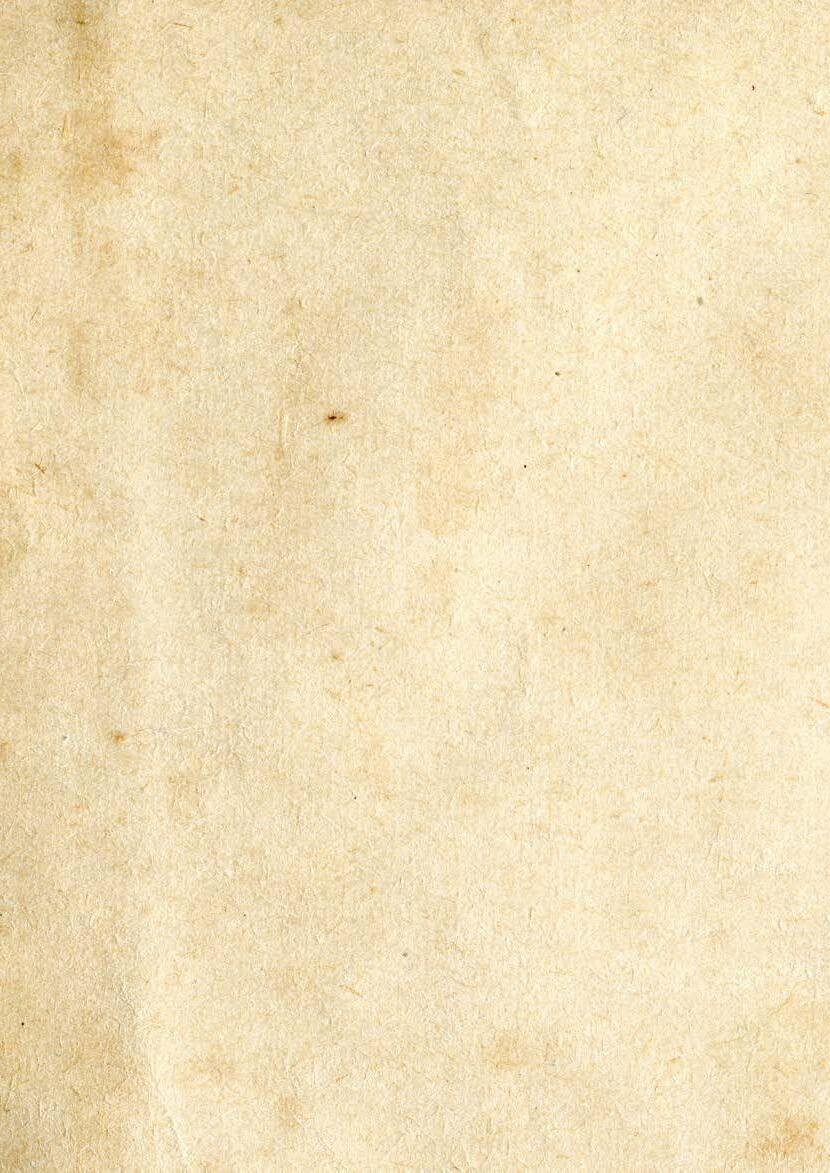
Though he died a few years before the emergence of Herzl and modern Zionism, the Netziv was an early advocate for the Chovevei Zion movement and staunchly supported the resettlement of Eretz Yisrael. He was one of the three esteemed rabbis who served as formal advisors to the movement. Secret Religious Zionist cells operated within the Volozhin Yeshiva under his watchful eye. His younger son, Rabbi Meir Bar Ilan, would become one of the great Religious Zionist leaders of the 20th century.
To those who opposed the New Yishuv in Eretz Yisrael because secular Jews were involved in its rebuilding, the Netziv wrote: “We must awaken to the call of G-d’s will, which has been heard from one end of the world to the other… [all of us,] every type of Jew, are called to
do that which is in our hands, whether a little or a lot.” He held this view throughout his life, and encouraged all those involved in the holy work of redeeming the Land.
Students traveled from all over the world to study at the Volozhin Yeshiva. After the yeshiva closed down, they migrated to the one place where the Volozhin Yeshiva still, in some way, lived on: to Rabbi Chaim Soloveitchik zt”l (1853–1918) in Brisk.

A scion of the Soloveitchik rabbinic dynasty, Rav Chaim developed the famed “Brisker Method,” a highly analytical method of Talmud study focusing on precise definitions and categorizations of halacha which would shape the way much of the Torah world studies the Talmud. During the yeshiva’s final years in Volozhin, Rav Chaim’s shiur attracted the greatest students of the era. In Rav Bar Ilan’s words, “he was the Rav of the generation, and a guide for future generations.”
Unlike the Netziv, Rav Chaim was a staunch opponent of Zionism, viewing it as a movement that sought to destroy traditional Judaism and replace it with nationalism. His opposition to Zionism, however, did not lessen his love for Eretz Yisrael or his support for the traditional Old Yishuv centered in Jerusalem.
In honor of the Netziv’s 130th yahrzeit (28 Av) and Rav Chaim’s 105th yahrzeit (21 Av), we are honored to translate several passages from Rav Meir Bar Ilan’s memoir, From Volozhin to Jerusalem, in which he describes his father’s and Rav Chaim’s opposing views of the nascent Zionist movement. Despite their differences, the two great leaders of the generation shared a deep love for the Land, evident in Rav Bar Ilan’s firsthand account.
34 |
(PHOTO: HOWIE MISCHEL)
The Netziv: A Chovev Zion
By nature, my father did everything necessary, with iron strength, to actualize his dreams – though he did so in a pleasant manner, with grace. Just as he lifted the ideal of love of Torah to an extraordinarily high level through the Volozhin Yeshiva, so too did he intensely desire to realize his ideals in regard to Eretz Yisrael. He was not satisfied, as most other rabbis were, with giving his approval to the settling of Eretz Yisrael or even by making efforts to encourage others to make Aliyah. His wholeness of soul brought him to the conclusion that he and his family must settle in the Land. Sadly, however, he suffered the same decree as the teacher of all of Israel, Moshe Rabbeinu: “but you will not come there” (Devarim 32:52).
Though the challenges facing the Volozhin Yeshiva in those days were very difficult and complex, and my father was completely immersed in those issues, he nevertheless spoke constantly about the settlements in Israel among our family. The “air of Eretz Yisrael,” the “ץֶרֶאְד אָריִוֲא

was felt throughout our home.
When we received the mail, there were always several letters among the dozens that arrived that were related to Eretz Yisrael and the Chibbat Zion movement. He received letters from the Vaad in Odessa, of which my father was one of the “gabbaim,” and he would receive letters from activists like Rav Shmuel Mohilever, Rav Mordechai of Brisk, Tzadok HaCohen and Erlanger from Paris. He also received letters from well known rabbis and activists in Eretz Yisrael, as well as from simple people…


There was no lack of letters from those who opposed the idea of settling the Land. As was his way, my father responded to everyone. Sadly, the letters he wrote were not preserved or gathered, and only a few letters here and there have been saved and publicized.
My father reacted strongly to news of people acting “freely” [not in accordance with Torah] in some of the new settlements, and gave direction on how to address and remedy the situation. But his dedication to Eretz Yisrael never wavered, even for a moment. Quite the opposite was true; he couldn’t bear it when people spoke badly about Eretz Yisrael, even when he didn’t suspect the speaker of any bad intentions.
When a Jew from Eretz Yisrael would occasionally arrive at our home, he was immediately surrounded, and everyone would sit with him for hours to ask him questions about all matters big and small. These guests would then enter my father’s room and speak with him without interruption. One time, a meshulach from a yeshiva in Eretz Yisrael, Yechiel Michel the Yerushalmi, came to visit. He was a pleasant Jew, moderate, and because he had been to Eretz Yisrael several times, he was a distinguished guest in our home. This time, he entered my father’s office as he normally did to tell him the latest news from Eretz Yisrael, based on what he had seen and heard. After about an hour, we heard my father yell with anger – something that almost never happened – at the meshulach: “Get out of here, you meragel, you spy!”
The meshulach, standing by the door, was pale and afraid, and, struggling to get the words out, asked: “Rebbe, do you not believe me? Do you suspect that I am a liar?”
My father responded: “No. The meraglim also did not tell lies. But it is forbidden to speak of the disgrace of Eretz Yisrael, even if these things are true. One who speaks negatively about the Land is like a meragel!” The Jew asked forgiveness, promised that he would not tell any more negative stories about the Land and quickly and quietly left the house.
One of the most distinguished students at the Volozhin Yeshiva, Rav Avraham Yitzchak HaKohen Kook, was particularly beloved to my father. He was once asked, “How do you feel in [the Volozhin] Yeshiva?” He answered, “I feel as if I am in Eretz Yisrael,” an answer that was very significant in my father’s eyes.
My father was not just a supporter of Eretz Yisrael in spirit; he also acted practically to strengthen the Yishuv . He was very involved in the Odessa Vaad, to the extent that on Erev Yom Kippur during Mincha, when the yeshiva students put out various “bowls” for tzedakah, he ordered me to sit next to the bowl for “Yishuv Eretz Yisrael,” and he himself dropped money into this bowl several times. The students noticed this, and more than 9 rubles were collected in the bowl – a significant amount of money in those days.
When my father received a telegram stating that the Zionist activist Dr. Leon Pinsker had died, he was very upset. As a side
לֵאָרְׂשִי,”
The Volozhin Yeshiva
| 35
The Netziv
point, the telegram was written in Russian and used a Russian phrase that essentially said “Pinsker is finished.” My father said, “This is not a Jewish idea. When a person dies, he is not ‘finished.’ On the contrary, it is a beginning.”

Rav Chaim Soloveitchik: Eretz Yisrael vs. Zionism

By nature, Rav Chaim was the kind of person who was burdened with spiritual suffering. He was always afraid of the day of judgment, of tomorrow. Every thought about illness and death depressed him. Every bad tiding about someone’s death had a terrible impact upon him. Even more so, he was gripped with unusual dread over the future of his soul, afraid that it would come to spiritual destruction. He was afraid of any new movement in Judaism, fearful that any step off the beaten path was likely to cause people to stray from Judaism. He lived and conducted himself without considering all of the aspects of the issue, because the one thing that was certain in his eyes was this: to grasp onto the old without any change whatsoever. In Zionism, he saw not only the desire to build up the Land, but also the cause of new theories and new problems in Jewish life and thought. This alone was enough to make Zionism frighten him, just as he was afraid of all modern learning, newspapers and books, and anything that contained something new and was not accepted and passed down through the generations.
His opposition, therefore, was respectable, if also painful, for it came from anxiety, inner fear, and spiritual suffering. Suffering generally has the power to increase a person’s holiness, and this is true, many times over, when it comes to the spiritual suffering of a lofty person like Rav Chaim. And so when Rav Chaim would speak negatively about Zionism or Zionist leaders, whom the young people of the time admired, it caused pain, though not of the kind caused by others who disparaged the Zionists. The opposition of the average anti-Zionist did not derive from fear but rather from smug satisfaction and self confidence…

But despite all this, the “air of Eretz Yisrael,” the “לֵאָרְׂשִי ץֶרֶאְד אָריִוֲא,” permeated Rav Chaim’s home. His spirit was so great that he could oppose Zionism while recognizing the urgency of practically working on behalf of Eretz Yisrael. With the exception of a few extraordinary activists, Rav Chaim Soloveitchik did more for the good of Eretz Yisrael than any other rabbi, focusing his efforts, obviously, on helping the Old
Yishuv. Almost all of the large yeshivot in Yerushalayim had representatives in Brisk. Meshulachim for tens of Torah and charity organizations would come at set times to give him financial updates. Hundreds of letters concerning the organizations in Eretz Yisrael came and went in Brisk every week. Every difficult issue in the Old Yishuv, whether it concerned Toras Chaim, Ohel Moshe or the Diskin Orphanage, was brought before Rav Chaim in Brisk, and they would follow his guidance… There were certain meshulachim that Rav Chaim would spend time with for several days, simply because it gave him so much pleasure to hear about life in Eretz Yisrael. The more details the meshulach could offer, the more pleasure Rav Chaim had in listening to him. He was interested not only in the spiritual Eretz Yisrael, but he also yearned to hear about the physical, tangible Eretz Yisrael, specifically about Yerushalayim – what life was like there, how people make a living, how they dressed, what its streets looked like, and so on. Every detail, every bit of information he heard, gave him great pleasure, enriching his soul and gladdening his heart. ◼
36 |
Rav Chaim Soloveitchik
We are Already Free Sivan Rahav-Meir
“Twenty years ago, I was seriously injured in a terrorist attack in the village of Otniel (in Judea, south of Hebron),” Asaf Fasi said during a Zoom meeting of the Mitchadshot (Women’s Renewal) community. “During my rehabilitation, my friends presented me with a poem of Rav Kook which I will never forget:
,יִפוגְב ָלַח יִנֲא םִאְו
?יִתָמְׁשִנ ןֵכ ם ַג הֶ זִמ לֹבְס ִת םִאַה
,יִרָׂשְב יִנֵא ְכַדְי םיִמָעְפ ףֶלֶא םִאְו
?יִחור הֶזִמ אָכֻדְיֲה
,רֹורְדו רֹוא ףֵאֹוׁש ,יִנֲא ׁשֶפֹח אֵלְמ אלַה
,רָרְחֻׁשְמ יִנְנִה רָבְכ – ת ורֵחְל יִתָפיִאְׁש םִעְו
.ןיִרֹוח ןֶב יִנְנִה יִתָמֹוק ֹאלְמִבו
If my body is weak, Should my soul also suffer?
If my flesh brings me misery a thousand times, Should my spirit also be miserable?
I am filled with freedom, I inhale light and liberty. And with my aspiration to be free, I am already liberated. When I rise to my full stature, I am truly free.

“These words of Rav Kook gave me much strength. I began collecting short quotes from him that have now been turned into a book: Mishpatei HaRav Kook (Thoughts of Rav Kook).”
What is the secret of his “I am Filled with Freedom” poem? The idea that having a broken body does not mean the soul must be broken too. On the contrary. The spirit of a human being is incredibly strong. It can lift up the body and heal it. Rav Kook writes that the soul determines who we are to the extent that if we only aspire to freedom, we are already free.
Translated by Yehoshua Siskin.
Sivan Rahav-Meir
is a media personality and lecturer. She lives in Jerusalem with her husband, Yedidya, and their five children, and serves as World Mizrachi’s Scholar-in-Residence. She is a primetime anchor on Channel 2 News, has a column in Israel’s largest newspaper, Yediot Acharonot, and has a weekly radio show on Galei Tzahal (Army Radio).

| 37
A member of the Mizrachi Speakers Bureau mizrachi.org/speakers
From Efrat to Atlanta: Raising Awareness of Aphasia
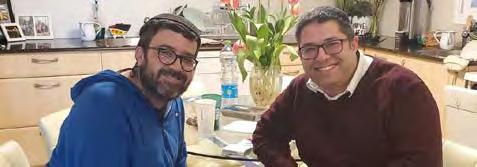
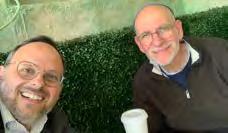

Kally Kislowicz
Eitan Ashman, 42, was the ultimate community member and family man. Owner of a property management business, CrossFit instructor, volunteer paramedic, and ambulance driver, Eitan regularly made time to give shiurim in Efrat, where he lived with his wife Leora and their 4 teenagers. But in 2017, the Ashmans’ world shattered. Eitan suffered a massive stroke, which extensively damaged the left hemisphere of his brain. After months in the hospital, he was unable to use his right arm, and had minimal use of his right leg. Eitan experienced memory loss, chronic pain, and fatigue. Most devastating of all, the stroke left Eitan with aphasia, a language disorder that affects communication and comprehension.
Eitan’s aphasia, known as Broca’s aphasia, means that he can conceptualize words, but has tremendous difficulty articulating them. Following the stroke, Eitan could only say the word ‘savta’. While he knew what he wanted to say, he was only able to repeat this one word. Years of hard work and therapy have helped to expand Eitan’s vocabulary, but communication is still frustratingly slow. Eitan remains as intelligent, kind, and funny as ever, but his language, his comprehension, and his ability to read and write are limited. Aphasia has no cure, but many people show improvement over time. And while approximately two million Americans suffer from aphasia, most people have never heard of it. The Ashmans are working to change that.

After Eitan’s stroke, Leora created Koach Eitan (Eitan’s Strength), a Facebook group intended to provide updates about his condition. Koach Eitan has since grown into an organization whose mission is to spread awareness of and provide resources for people living with aphasia and or the effects of stroke, and now, also creating a worldwide Jewish network and support for those with aphasia. Aphasia can lead to social isolation, so Koach Eitan launched initiatives to promote inclusion. The I’m ME project encourages people to see
beyond the disability and connect with the individual. The LET’S TALK initiative offers guidance on how to speak to someone with aphasia. Koach Eitan has become a lifeline, fielding calls from people and family members who need information, support, and assistance navigating the medical system. Last month, Koach Eitan launched a major awareness campaign: World Aphasia Shabbat . On June 16th, 2023, participating shuls throughout the world learned how to understand, communicate with, and include those with aphasia and other language impairments. Shul can be intimidating to someone who cannot read or speak with ease, but these communities learned how they can make it a welcoming space for those with disabilities.
World Aphasia Shabbat is a joint project between Koach Eitan and Congregation Ohr HaTorah of Atlanta, where Jeff Weener, an active member of his community with aphasia, is a congregant. Jeff reached out to Koach Eitan in search of support and Jewish connection, and with the encouragement of Rabbi Adam Starr, World Aphasia Shabbat was born.
Efrat resident, Abi Moskovitz explained why this Shabbat was necessary: “Jewish communal life provides us with a religious and social framework for our everyday lives. Imagine, for a moment, if you were not able to communicate with those around you; you couldn’t easily wish your neighbor a ‘Shabbat Shalom,’ make the berachah for an aliyah l’Torah, or strike up a conversation at a kiddush. You would feel alienated and excluded, despite your community’s best intentions. This Shabbat
was an effort to teach the Jewish world, a world so steeped in verbal dialogue and tradition, how to include those with aphasia.”
Eitan’s continued recovery, like Jeff’s and so many others, is a result of his hard work, and the commitment of his family, friends and community, who have cultivated skills to engage him in conversation and keep his mind and body active. With the help of Rabbi Johnny Solomon, the Ashmans have developed creative solutions which empower Eitan to participate in day-to-day activities as well as in Jewish life. Visit koacheitan.com to learn more about these creative approaches to helping those with aphasia and other language impairments.
 Kally Kislowicz made Aliyah from Cleveland, Ohio, to Efrat in 2016.
Eitan Ashman and Rabbi Johnny Solomon
Jeff Weener and Rabbi Adam Starr
Kally Kislowicz made Aliyah from Cleveland, Ohio, to Efrat in 2016.
Eitan Ashman and Rabbi Johnny Solomon
Jeff Weener and Rabbi Adam Starr
38 |







YOUR ALIYAH FLIGHT FACILITATE • CELEBRATE • ADVOCATE • EDUCATE WWW.NBN.ORG.IL • 1-866-4-ALIYAH • ALIYAH@NBN.ORG.IL WORKING IN PARTNERSHIP TO BUILD A STRONGER ISRAEL THROUGH ALIYAH
Olim Giving Back to Israel

Yoni Sherizen (Detroit, Michigan)
Made Aliyah and went from working in Jewish non-profit sector to founding a high-tech company
Making Aliyah was always part of my plan. Although my parents couldn’t fulfill their dream due to responsibilities in the US, Aliyah was always a core part of my life plan. Now, both sets of parents and all of my wife’s siblings live in Israel. While language and culture have posed challenges, I work in Hebrew every day, effectively managing people, projects, and initiatives despite my American accent. I served on our community’s Va’ad (committee) as the sole native English speaker and eventually became the chairperson. Immersing myself in this role, learning on the go, and embracing mistakes have helped me acclimate. For our family, breaking out of our comfort zone, exposing ourselves to Hebrew, and familiarizing ourselves with Israeli culture have been crucial to our success. Personally, I chose a community with 15% native English speakers, but others may prefer different ratios.
Before making Aliyah, I worked in the non-profit and Jewish communal sector, which I continued until transitioning to the tech industry. I founded a technology company called GABRIEL, which offers a groundbreaking proactive emergency response system. The skills I gained from running non-profits proved invaluable in managing an early-stage company where resourcefulness and versatility are essential. Demonstrating the transferability of skills can be challenging, as Israelis are sometimes hesitant to hire individuals from different industries. However, once you prove yourself, they recognize your abilities.
Living in Israel offers a profound sense of purpose and meaning, and it is inspiring to contribute to the nation’s history and growth. Though some of the cultural changes can be challenging, I’ve discovered it is better to embrace the differences instead of comparing them to what is familiar. Israel provides incredible learning opportunities and rewards; don’t miss the gift of Israel’s uniqueness!
Nava Freiberg (Miami, Florida)
Made Aliyah during the summer of 2022 and is now a Bat Sherut
Working at Yad Rachel, a therapy center for at-risk children, is deeply fulfilling. Our moadanit provides a nurturing and safe environment for children after school. My role demands empathy, attention, creativity, and patience.
Last August, I joined the Summer 2022 Charter Flight, embarking on my Aliyah journey. I joined Sherut Leumi, Israel’s national service program, which aligned perfectly with my values and practical considerations. It allowed me to contribute to my homeland and facilitated a smooth transition. Working with Hebrew-speaking Israelis, accessing government benefits, and living among other olot chadashot has supported my integration into Israeli life. Since arriving in Israel, I’ve found embracing the unknown to be exhilarating. As a bodedah, I’ve had to fearlessly tackle new challenges, and I’ve grown from the experience. Surprises along the way have been delightful. When my kupat cholim abruptly canceled my account, seeking assistance led me to discover that the helpful receptionist was my neighbor, resulting in a warm Shabbat invitation. My dental technician, conveniently located nearby, also became a friend, and I discovered her talent for making delicious French fries!
Being away from my family poses challenges, but I hope that one day my family will join me on this extraordinary journey. Israel offers a sense of purpose and meaning, contributing to its growth and drawing inspiration from its vibrant energy. The country provides remarkable learning opportunities and rewards. It is a place to expand horizons, deepen knowledge, and treasure the gift of its culture and history.
Follow NBN on social: NefeshBNefesh linkedin.com/company/nefesh-b’nefesh/ nefeshbnefesh

40 |
My Hero: Michael Levin ד"יה
David Perlow
One morning while drinking coffee, I came across an article in The Jerusalem Post with a picture of a young IDF soldier who had died in the Second Lebanon War. Little did I know that my life would change forever that day.
As I gazed into the picture of the young lad, I couldn’t help but be mesmerized by his smile. Who was this young man? What I came to learn about First Sergeant Michael Levin is that he was no ordinary Jew from America. He was the most inspirational figure for young American Jewry. He single-handedly woke up a generation to the importance of being committed to Israel in both thought and deed. I had found my hero.
Michael Levin left his comfortable home in Philadelphia to volunteer with the IDF’s elite 890 paratrooper unit. During his service, he participated in many anti-terrorist missions, repeatedly risking his life in defense of Israel. In 2006, Michael received a special vacation from the army to visit his family in the United States. While he was in Philadelphia, the Second Lebanon
War began and Michael immediately put everything on hold. As quickly as he could, he returned to Israel, cutting his vacation short to join his comrades in arms.
When Michael arrived in Israel, he was told not to come to the front lines, but rather to serve guarding Hebron. Michael looked the officer in the eye and said, “If you want to go to Hebron, you go to Hebron. I’m going to Lebanon.” Michael did not take no for an answer and demanded to be sent north to rejoin his unit in combat. Ultimately, his wish was granted. A week later, Michael and his unit entered the southern Lebanese village of Aita al-Shaab, where they came under heavy enemy fire. Michael was killed by a Hezbollah sniper while fighting in that battle.

Michael’s posthumous influence was so great on me that I decided to walk down the same path, leaving the comforts of America to volunteer as a soldier myself. Michael gave me confidence and vision; he showed me not only that it could be done, but it must be done.
On July 25th, the 7th of Av, we will commemorate Michael’s 17th yahrzeit. Though I
never met him, this extraordinary Jew will f orever be a part of my life. Michael’s yahrzeit is the same day I made Aliyah – a coincidence that carries great meaning for me. I named my son Michael Avraham in honor of my personal hero, who exemplified what is demanded of all in this generation: commitment.
Commitment is not judged by whether you serve in the army or not. It’s about loving G-d, His people, and the Holy Land of Israel like Michael did. May we find the strength to serve G-d and our people with the love, commitment and dedication of Michael Levin, a true hero of Israel.

This essay is adapted from David Perlow’s autobiography, Not A Lone Soldier.

| 41
My Father: A Spirit of Greatness
Rabbi She’ar Yashuv Cohen zt”l
Rabbi David Cohen zt”l (1887-1972), known widely as “HaRav HaNazir,” the “Nazirite Rabbi,” was Rav Kook’s most prominent disciple. A brilliant scholar, philosopher, kabbalist and mystic, he edited and organized many of Rav Kook’s writings into Orot HaKodesh, Rav Kook’s

Born into a rabbinic family in the town of Maisiagala, Lithuania, in 1887, Rav David Cohen exhibited an extraordinary blend of profound expertise in Talmudic studies and an unquenchable thirst for intellectual exploration, even during his formative years in yeshiva. Even as a young man, he felt an irresistible attraction to texts that lay beyond the boundaries of the yeshiva’s prescribed curriculum.
In his extraordinary biography, he described his resolution, upon first visiting the Kotel, to rise above his inner turmoil and unify every aspect of his being for the sake of G-d: “And here, I sealed a covenant between myself and the G-d of Israel; there are no words to express that which dwells in the innermost reaches of my heart and soul. All the deep philosophical questions have passed over me, and now I feel so, so close to G-d… a new spirit has descended upon me here, traces of prophecy at the center of the heart of the Jewish people, all connected and intertwined in this place.”1
In this introduction to his father’s commentary on the Kuzari, Rabbi She’ar Yashuv Cohen zt”l describes his father’s unique wholeness of spirit and his ability to unify the many aspects of his life. We are proud to translate this essay in honor of HaRav HaNazir’s upcoming yahrzeit on the 28th of Av.

42 |
The wondrous Rabbi Yehuda HaLevi was a complex person, with many seemingly contradictory traits that in actuality complemented one another. He was a philosopher and faithful believer, a philosopher and a kabbalist, a poet and an author, a giant of Torah and halacha whose primary focus was on aggadah and Jewish thought. A holy poet whose entire life was dedicated to seeking out and serving G-d, he longed for G-d’s holy city, for whom he sang the song of his life,
יִלֲאְׁשִת אֹלֲה ,ןֹויִצ,” “Zion – behold, ask after the wellbeing of your imprisoned.” But he was also a man of action who made Aliyah to Yerushalayim, where, according to legend, he was trampled by an Arab horseman in front of the Kotel
With appropriate awe, I believe much of the same greatness and complexity were expressed through the personality, writings and teachings of my revered father, the Rav HaNazir zt”l. On the one hand, he was a researcher, terribly punctual, and a philosopher with deep knowledge of the writings of the world’s great philosophers – philosophers of every language and generation, Jewish and gentile, whose writings he read in their original sources and languages. He was a man of pure logic, a man of truth without compromise, with a critical approach that he developed during his years of academic study in Germany, Switzerland, and the academic world. His approach, his way of investigating and thinking, was scientific. But on the other hand, he was a Nazir of G-d, an awesome kabbalist, a great tzaddik who was completely immersed in the upper spheres of the worlds of mystery and holiness, one who “dwelled in the shelter of the Most High” (Tehillim 91:1)...
He was a gadol who knew all aspects of nigleh, the revealed Torah. He mastered the Lithuanian style of Torah study, which he received from the students of the Vilna Gaon through the Volozhin Yeshiva and then from the great Lithuanian yeshivot that followed the learning style of Rav Chaim Soloveitchik and his students. His upbringing in the educational philosophy of the mussar yeshivot together with his attachment to the Lithuanian rationalist approach to learning combined seamlessly with his deep dive, as a kabbalist, into the mighty waters of nistar, the hidden Torah. He mastered the teachings and writings of chassidut, beginning with the Ba’al Shem Tov, and particularly the writings of the Ba’al HaTanya and Rebbe Nachman of Breslov and their students which were beloved to him, as well as the teachings of the Sefat Emet. He was a rare, G-dly personality who was both revered by the Charedi Torah world and was the respected guide of the students of Rav Kook.
This combination of traits and interests did not lead to conflict, but rather an extraordinary harmony. He was calm, at peace, pleasant in his interactions, a man who possessed great patience and self-control – traits that concealed the inner storm of holy fire that raged within him, an intensity that reached its peak when he accepted upon himself the way of nezirut.
We, his family and his students and their families, remember his many silences – on public fast days, on Shabbatot, and particularly during the forty days from Erev Rosh Chodesh Elul until after Yom Kippur – silences that he accepted upon himself as steps towards receiving ruach haKodesh and
towards the vision of renewing prophecy in our time, which were the longing of his soul and the yearning of his spirit. These matters are clarified for those who know and understand by studying his great work, The Voice of Prophecy: The Hebrew Auditory Logic (יִרְבִעָה יִעְמִׁשַה ןֹויָגִהַה – הָאובְנַה לֹוק), his life’s vision, which harmoniously integrates the revealed and the hidden, halacha and aggadah, kabbalah and philosophy, in the path of his great teacher, the light of Israel, Rav Kook, whose great sefer he organized and edited.

The beginning of Rav Kook’s Orot HaKodesh contains chapters entitled “The Characteristics of Holy Unity,” “The Unity of Torah and Prophecy,” “The Unity of the Prophetic Spirit and Halacha,” “The Unity of Halacha and Aggadah,” and more… This sefer, of course, was edited and organized by my father. The spirit of achdut, of unity, is found in all of my father’s writings, and particularly in the classes he gave on the Kuzari to the students of Merkaz HaRav. The students who merited to participate in those classes remember the dozens of books that sat on the windowsill behind him when he was giving these extraordinary lectures – sefarim filled with bookmarks and source sheets. From time to time, whenever he would mention a source during the lecture that pertained to the Kuzari, he would pull the book from the windowsill and read aloud from it together with the students, so that the truth should not be lost.
When he reached the halachic topics covered in the Kuzari, such as ritual slaughter, he insisted on learning and teaching these halachot and how they are practiced in our own time. He would teach from the halachic works of poskim, so that the students should never feel that there was any contradiction between their halachic studies and the halachot that they learned from the pages of the Kuzari. He covered every topic in a deep and foundational way, whether it was the laws of the sanctification of a new month or the laws of marriage, kabbalistic topics covered in Sefer Yetzirah, or topics in Jewish thought and general philosophy. Every topic was studied assiduously, by studying the original sources with great clarity and care. And everything he taught was infused with the הָלודְגַה
ַחור, the spirit of greatness, that dwelled in the beit midrash of Rav Kook – the spirit of yearning for redemption, of preparing for the renewal of our days as of old, of holy faith in the ingathering of our exiles, of the return of G-d’s shechinah to Zion, of the return of our prophets as of old, of the final and complete redemption and the coming of Mashiach to repair the world with the kingdom of G-d. “For the land shall be full of knowledge of the Hashem as water covers the sea bed” (Yishayahu 11:9).
“ךִיַריִסֲא
םֹולְׁשִל
Translated by Rabbi Elie Mischel.
| 43
1. Translation by Rabbi Josh Rosenfeld.
If My Spouse Would Only Change
Rabbi Moshe Berliner, MSW

What does a newly-married couple experience as they begin to build their marriage? When things go well, they are filled with a sense of pleasure, well-being, and accomplishment. But what happens when things don’t go smoothly? Usually, each partner tries to deal with the difficulty in the same way they have successfully dealt with similar situations in the past, assuming these solutions will work equally well now. Often they do, and the couple moves ahead, continuing to build their marriage. But if both spouses try what has worked for them in the past and things don’t improve, the relationship begins to falter. Each spouse views the problem differently, and each has a different approach to solving it. There is, though, one perspective they usually share. Both are clear that their partner is to blame for the problem.
“I realize I’m not perfect,” a young wife said, voicing a common refrain. “I know I have faults. But it’s really not that hard to get along with me. This is the way I’ve acted for the past twenty-three years before I married. And if you look around, you’ll see that I’m okay with just about everyone. I’ve got plenty of friends. My husband isn’t bad either. But there’s one thing he does that...”
And, of course, it is that “one thing” that causes all the problems. “If he would just change that one thing,” she says, “our relationship would be fine.”
She sounds convincing. She appears reasonable, and her description of herself and how she acts makes sense. Her description
of her husband’s behavior is also reasonable. It seems to make sense that if he would just straighten out and stop doing those things she says he’s doing or start doing those things she says he should do, the relationship would greatly improve and the problems would disappear.
It sounds convincing… until her husband shares how he sees the situation. He starts off identically. “I’m basically okay,” he says sincerely. “Not perfect, but reasonable. If she would only do ___, or stop doing ___, the relationship would be great.”
Since each individual and each marriage is unique, there are many variations to this interaction. However, the paradigm of “if he or she would just change then everything would be fine,” is the way many couples face their distress.

When they seek help, they have a clear request. Since they define the problem as well as the solution in different ways, they want a judge to validate their view of the situation. They are convinced that the judge’s expert opinion will convince their spouse. Once the judge affirms that their position is correct, their spouse will change, and the relationship will flourish. They understand that it will be hard for their spouse to hear that he or she is wrong. They are open to the possibility that it will take time for their spouse to change those awful habits. But when their spouse hears the judge, i.e. the therapist, say they are wrong, they’ll be convinced, he’ll change, and all will be well.
Unfortunately, this approach rarely helps. Since both partners are convinced that
the other is responsible for their difficulties and that it is their spouse who needs to change, anyone assigning fault will be relegated to the category of someone who “just doesn’t get it.” His judgment and certainly any subsequent suggestions he may make are simply wrong.
The Torah approach
There is another way to understand how to build a marriage – an approach taught at the very beginning of the Torah. After his creation, Adam’s first act is to name all the animals. Naming was a process that assigned meaning and significance, because each name expressed the essence of the newly created being. The extraordinary benefit of giving a creature a name is that Adam, and by extension all
44 |
mankind, can think abstractly about it. When we mention the name, we can consider what the name represents without actually being in the creature’s presence. We are not bound to deal exclusively with the physical phenomenon that our senses bring to our attention. Man’s ability to use his intellect – to think abstractly, to ponder, to judge – defines man as a unique being.
Adam’s second act is to fail. He’s given one commandment: to refrain from eating fruit from the tree of knowledge. The snake convinced Eve to eat the fruit. She, seeking partnership in this act, gave the fruit to her husband to eat. One commandment, one failure.
The ensuing story is remarkable. G-d calls to Adam saying, “Where are you,” metaphorically asking, “What have you done?” G-d’s question is an invitation to a dialogue, to a process of understanding. But Adam does not respond to G-d’s question. Instead, he points to his wife, and in what seems to be a built-in primordial human response, blames her. He tells G-d, “My wife is responsible. Had she not done what she did, I would never have fallen.”
The Midrash points out that Adam adds an additional accusation. “You, G-d, are also responsible for my failure. Had You not created her from my rib and given her to me, I wouldn’t have eaten the fruit”
(Sifrei Devarim 1:10). Seeking to escape responsibility for what he has done, Adam blames not himself, but both his wife and G-d for his actions. The urge to avoid culpability, to ascribe blame to someone else, is embedded in the spirit of man. When there is marital discord, this urge invariably finds expression.
Turning to Eve, G-d asks how she understands what she has done. Like Adam, she attempts to escape responsibility by saying, “The snake enticed me and I ate.” The persona is different; the response is the same. Eve blames the snake for her actions. She doesn’t take responsibility for what she did.
G-d’s response to both Adam and Eve is unequivocal: Each of you – and by extension, every human being – is responsible for your own actions. Taking full responsibility for our own actions is the first lesson the Torah teaches, and it forms the basis of a healthy marriage.
Responsibility in marriage
How is this idea central to marriage? A life of religious significance is a purposeful life. It is based on striving to fulfill a larger vision of living life as an expression of G-d’s will in this world. One central way to express G-d’s will is to build strong marriages that serve as the foundation of healthy families.
When a couple marries, they immediately become aware of the many differences that exist between them. Many couples find that these differences make it difficult to build their marriage. And, like Adam and Eve, people often react to their difficulties by blaming their spouse. But that response, as we saw with Adam and Eve, is never helpful.

What should we learn from their experience?
The most basic lesson is that each partner has a responsibility to do what they can to fulfill their part in the marriage. The husband’s obligation is to be the best husband he can be; the wife’s responsibility is to be the best wife she can be.
Often when a couple hears these ideas, one or both will object. “It’s all well and good to talk about these ideas,” a husband will say, “but she literally drives me crazy. How can you expect me to act the way I should when she treats me the way she does?” Maybe his wife does act in ways that make it difficult for him to respond as a loving husband. But it is crucial that he differentiate between his responsibility, which doesn’t change, and how he actually behaves. The responsibility to be a good husband is not conditional on his wife’s actions. She may behave in a way that makes it very hard for him to fulfill his obligations. And all of us, since the time of creation, occasionally fail. But we must never lose the clarity that each spouse bears responsibility for their own actions, including the obligation to interact with their spouse as a responsible, loving husband or wife.
When a soul returns to Heaven, it is required to explain its actions during its lifetime on earth. In noting these questions, the Talmud doesn’t mention any that relate specifically to marriage, but it seems to me that there might very well be a question like this: “How did you act as a husband or a wife?”
“Well,” the soul might say, “you know who my wife was. So while it’s true that I might not have acted as well as I should have, I’m sure you understand it was because she…” If he says this, I imagine the response might be: “You seem to have misunderstood. You thought your task was to be a good husband to someone else? Your task was to be as good a spouse as you could to your specific partner.”
Adapted from Rabbi Moshe Berliner, To Build and to Bond: Living Well in a Jewish Marriage (Mizrachi Press, 2019).
Rabbbi Moshe Berliner, MSW has worked as a marriage counselor in Jerusalem for over 30 years. He is the founder and director of Machon Netivot for Family Therapy, and the author of the book To Build and to Bond: Living Well in a Jewish Marriage

| 45

46 |

| 47
NOVEMBER 13–20, 2023
LED BY RENOWNED HOLOCAUST EDUCATORS
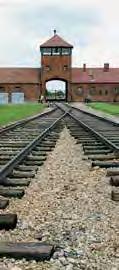


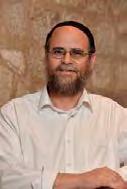
Join us on a m eanin g ful j ourn ey f ocus i ng on the exp erien ces of p re-war Eu ropean J ewr y, vi sit ing sy nag og ues, centers of c ha s si d ut an d key si tes o f R el i gi o us Zionism. We’l l als o ex amine the Hol o cau s t years by v isitin g Jewi sh gh et to s, de a th and labor cam p s, and mo re.
J anu s z Korcza k , O s ca r Sch in dle r, Ra bb i Yitzchak Yaa kov Reine s, Rabb i Shmue l M o ho liver, the Vilna Gaon, Abba Kovner, the R em a and Reb El i mel ech a re s ome o f the p er sona l it ie s we’l l me e t along the way.


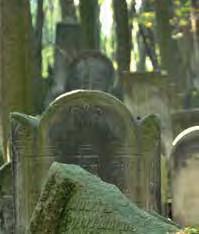
Warsaw | Je dwabn e | Tykocin | Bi ał ystok | Treb lin ka | Kotz k | Lub lin | Maj d ane k | Be lzec
Le żajs k | Tarn ów | Bo bow | Kra ków | Oświęc im | A usc hwit z | Bi rke na u | Łódź | Pio tr ków | Vil na
FOUR AND FI VE-STA R ACCOMMO DATI ON • AIR-CON D ITIONE D BU SES
SHA BBAT I N K RAKÓW • DAI LY KO SHER MEA L S • L IM ITE D PL ACE S
For de tai l s please ema il jeremy@harova.org
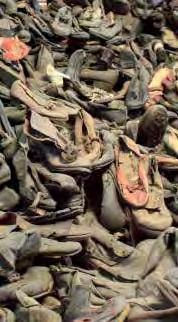 RABBI DAVID MILSTON RABBI DORON PEREZ JEREMY KURNEDZ
RABBI DAVID MILSTON RABBI DORON PEREZ JEREMY KURNEDZ
LASTFEWSPOTS!








































 Roi Abecassis at the Ohr Torah Stone/Amiel shlichim conference in Miami
Gael Grunewald at the training of 90 outgoing Morim Shlichim
Roi Abecassis at the Ohr Torah Stone/Amiel shlichim conference in Miami
Gael Grunewald at the training of 90 outgoing Morim Shlichim








 An Introduction by Rabbi Aron White
An Introduction by Rabbi Aron White




























 Rabbi
Shlomo Brody
Rabbi
Shlomo Brody


















 Odelia Glausiusz
Odelia Glausiusz







 Rabbi Reuven Taragin is Educational Director of Mizrachi and Dean of the Yeshivat Hakotel Overseas Program.
Scan here to join Rabbi Taragin’s daily Divrei Torah WhatsApp group
Rabbi Reuven Taragin is Educational Director of Mizrachi and Dean of the Yeshivat Hakotel Overseas Program.
Scan here to join Rabbi Taragin’s daily Divrei Torah WhatsApp group
























 Kally Kislowicz made Aliyah from Cleveland, Ohio, to Efrat in 2016.
Eitan Ashman and Rabbi Johnny Solomon
Jeff Weener and Rabbi Adam Starr
Kally Kislowicz made Aliyah from Cleveland, Ohio, to Efrat in 2016.
Eitan Ashman and Rabbi Johnny Solomon
Jeff Weener and Rabbi Adam Starr




























 RABBI DAVID MILSTON RABBI DORON PEREZ JEREMY KURNEDZ
RABBI DAVID MILSTON RABBI DORON PEREZ JEREMY KURNEDZ
